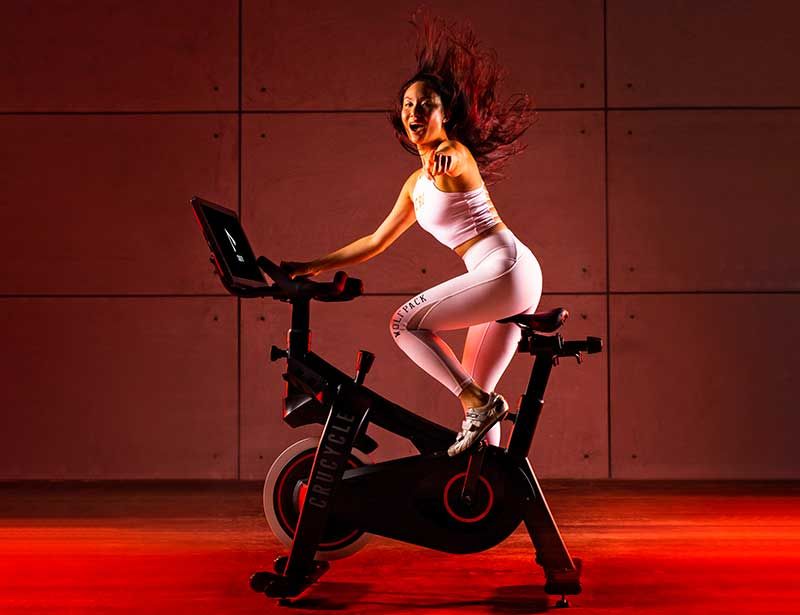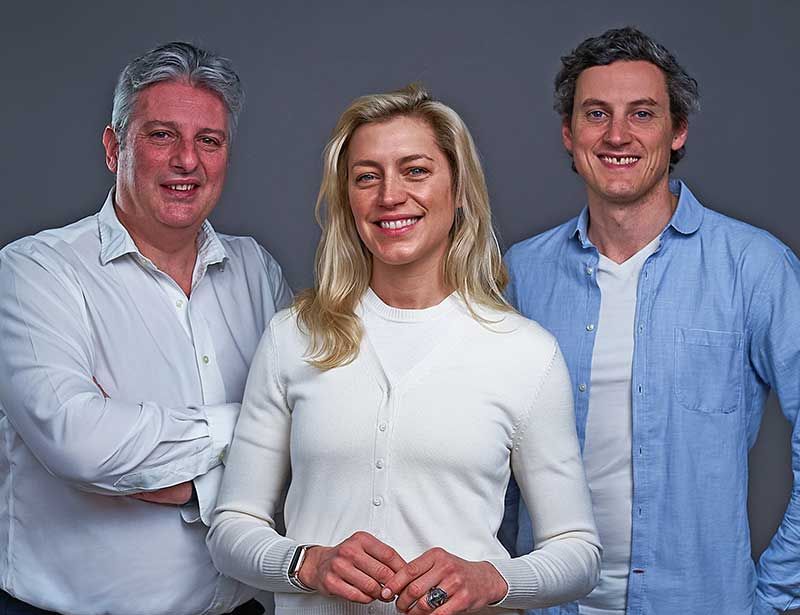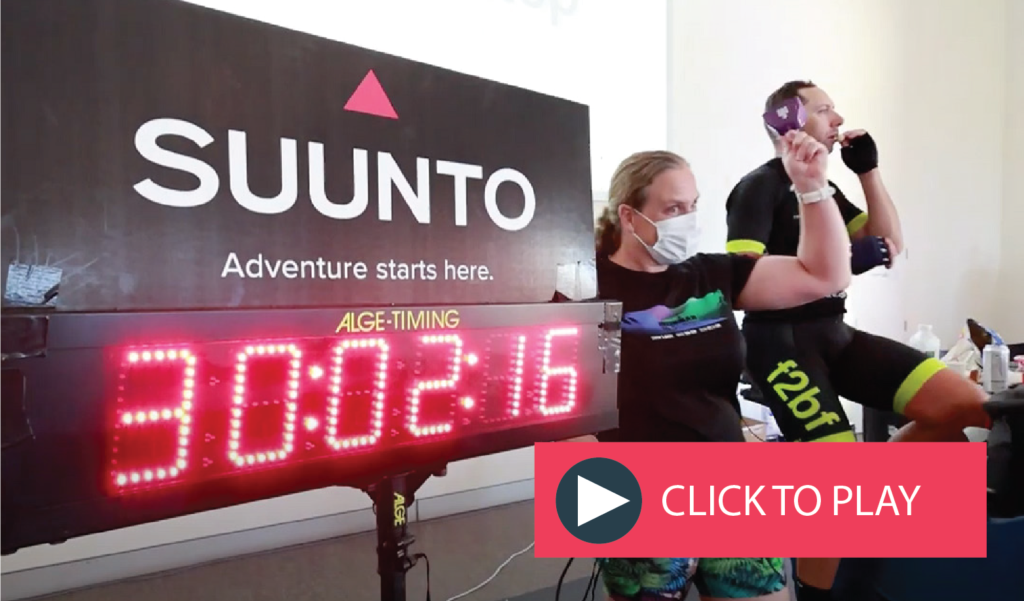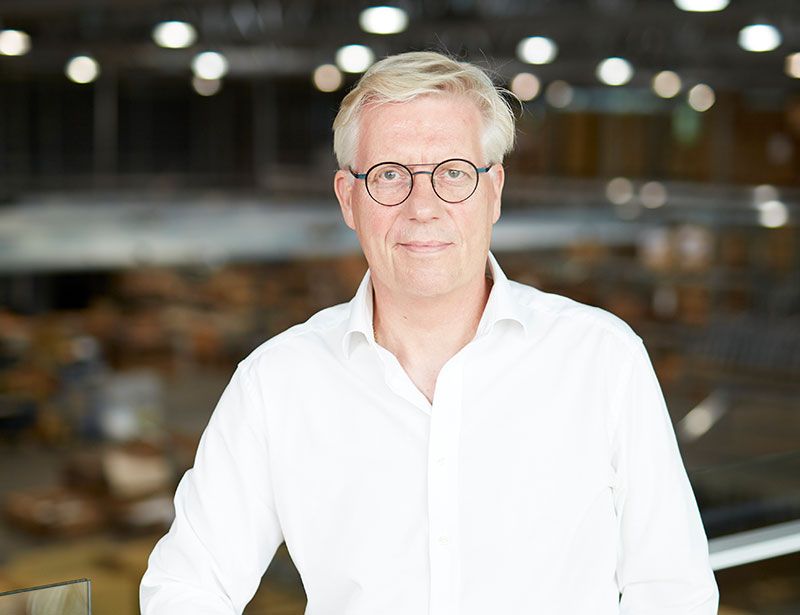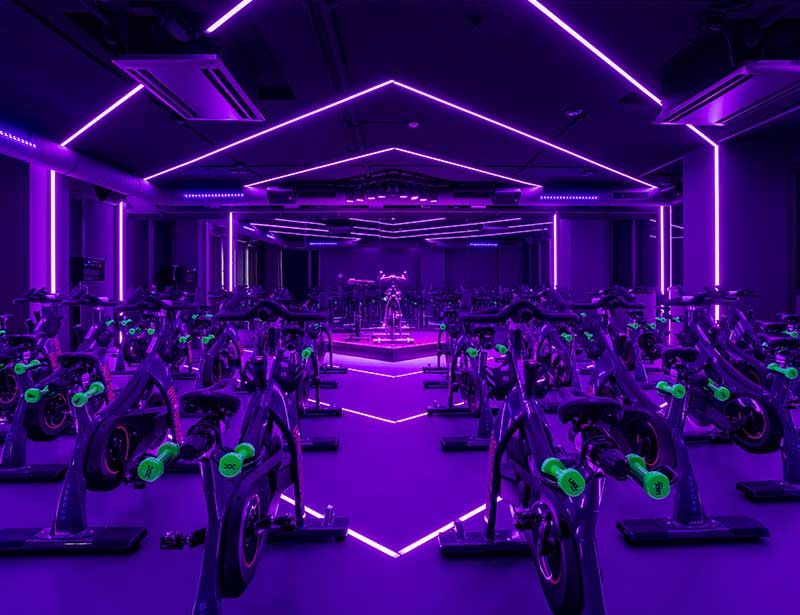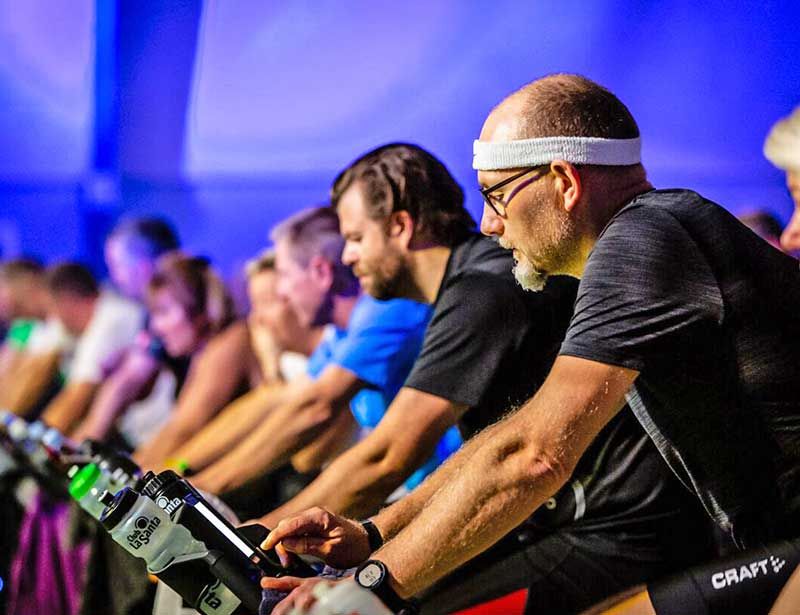Bebe Ding
What was the inspiration for CRU?
Ten years ago, when we first came up with the idea for CRU, there was nothing else like it in Singapore. In fact, there was no fitness sector to speak of: the only things to do in Singapore were shopping, the cinema or the one nightclub that everyone went to every single weekend!
However, my siblings – Valerie and Calvin – and I had grown up between Singapore and California. In fact, we were students in Los Angeles when, inspired by the likes of SoulCycle, Calvin and I separately came up with the idea of launching our own studio.
“Being siblings determines how we run the company. The sense of community runs deep. Our family values are why our brand is so strong.”
We had become addicted to the ‘party on a bike’ vibe and we qualified as indoor cycling instructors, initially just so we could keep doing that style of training in our own workouts. However, we knew we wanted to bring something fun to Singapore, Valerie came on-board too and CRU was born.
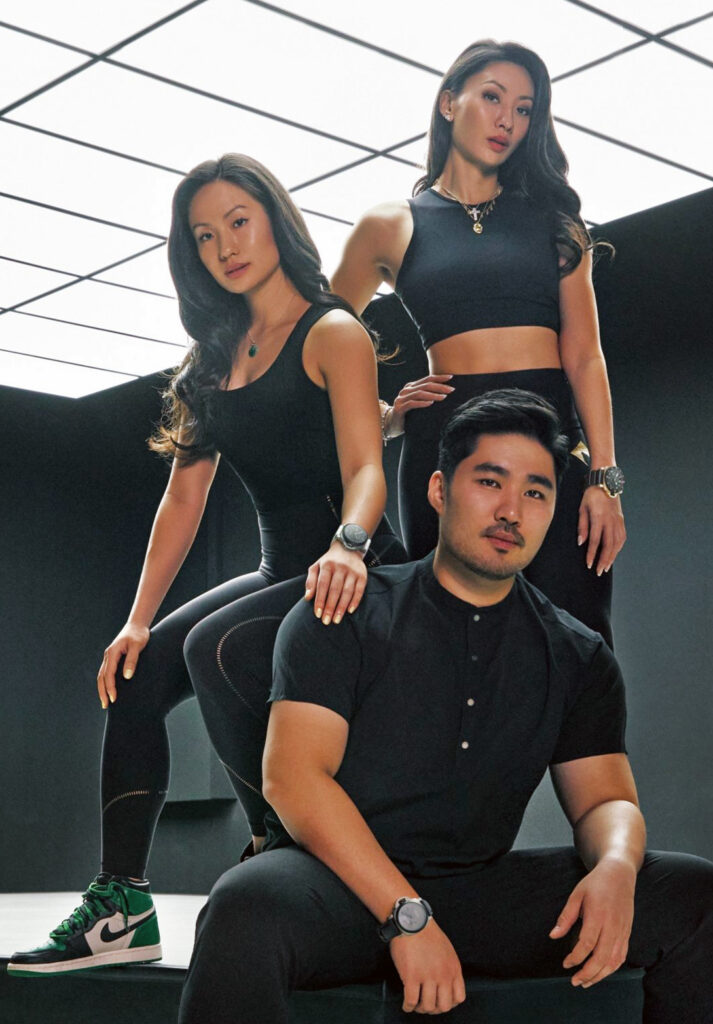
How would you describe CRU?
CRU is more than just boutique fitness, more than just physical locations. It’s a lifestyle brand: a culmination of music, fitness and lifestyle. Crucially, it’s also about family and community – what we call our wolfpack.
We launched with rhythm cycling in 2014, opening our first CruCycle studio at 68 Duxton Road, Singapore. Our intention was always to expand into more concepts across multiple studios, though, with a growth mindset that’s encapsulated in our name: CRU. ‘Cru’ draws from the French language, where in the world of wines it relates to top quality production growth; for us, it represents our ethos of organic spiritual, mental and physical growth.
Our second studio opened in Los Angeles in 2017: a boxing concept launched under the CruBox brand. As with CruCycle, and indeed all our programmes since, the workout was set to the beat of the music and quickly became a success story, leading us to open CruBox in Singapore – in the same building as our first CruCycle – in 2019.
In 2021, we opened a new flagship on Orchard Road, in the heart of Singapore, bringing us to three locations in the city. This time we had two studios in one location: a CruCycle studio and a multi-purpose studio offering CruYoga and CruHIIT.
Alongside our physical studios sits our CRU TV digital platform and CRU TV Bike, while over the years we’ve also launched things like merchandise and a lifestyle blog.
Tell us about the wolfpack.
The wolfpack is our community, as I say, and that’s what we’re all about at CRU: a sense of family, of familiar faces. We believe that through togetherness, we’re able to achieve so much more than we would be able to achieve alone. In our workouts, you follow the Pack Leader – the instructor – to grow as a pack and become stronger together.
“CRU is synonymous with indoor cycling in Singapore and it’s still at the heart of what we do, even as we expand into more concepts”
We have a wide demographic age-wise, although our core audience is around 25–40 years old, but we do sit at the premium end of the market. We charge S$45 for a single class and S$400 for a 10-pack across all disciplines, so we have a fairly affluent customer base – generally CEOs and those in other senior positions who are looking for an hour’s respite from long days at their desks.
We do cater for all levels, but at the same time ours are known to be the toughest workouts in town. It’s back to CRU’s wolfpack mentality: people come to push themselves.
And our instructors reflect our customer profile: aged 24–46 years, a good number of them originally came to us as customers.
Incidentally, the notion of the wolfpack was also inspired by our love of dogs. All three of us each have a pet husky – the silhouette in the CRU logo – and the communal areas of our studios are dog-friendly. In 2019, we even launched a PUPS at CRU sub-brand selling all-natural dog treats and toys!
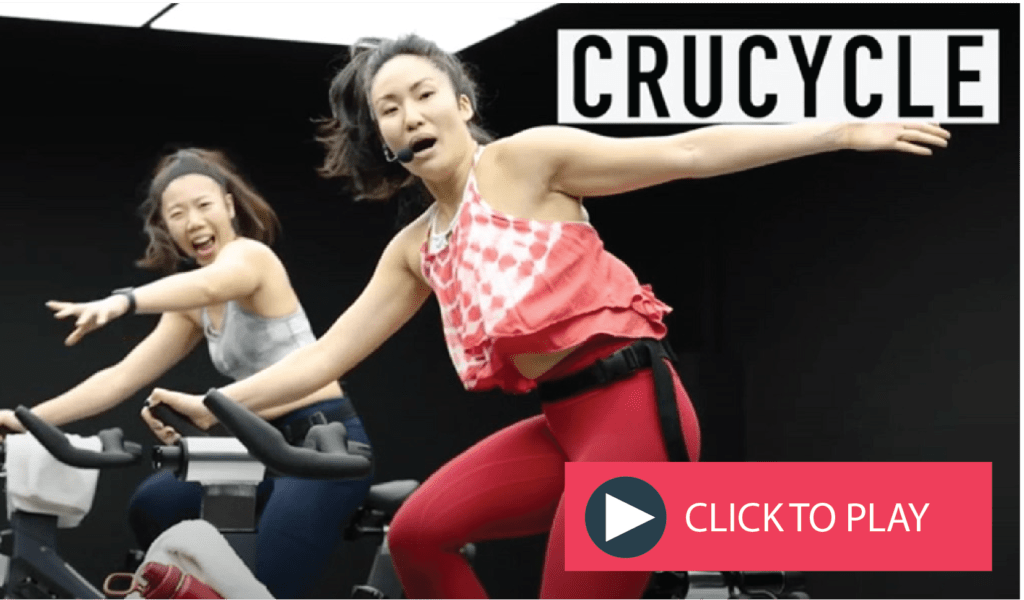 What are your USPs?
What are your USPs?
Singapore is fairly conservative, but the way we do things at CRU is more relaxed, friendly, open-minded, comfortable: people call it the ‘CRU Swag’. It’s just that bit more outspoken and daring than you get elsewhere in Singapore, influenced by our US upbringing.
We train all our instructors to think out of the box, pushing themselves out of their own comfort zones to interact with our customers in new ways – cheering, clapping and so on. And people respond very positively: CRU becomes the one place they let go and experience a real sense of release.
“Singapore is fairly conservative, but the way we do things at CRU is more relaxed. People refer to our vibe as the ‘CRU Swag’.”
Quality of instruction is another USP. It tends to be that instructors work their way up to becoming a CRU instructor. Ours is their ultimate, aspirational destination – once they reach us, they stay with us – but even then, every CRU instructor goes through at least eight weeks of training, 15 hours a week, before they take a class. We also design all our own programming. Quality is a CRU hallmark across the board.
Underpinning all of this, we’ve simply been doing this a long time now. We know who we are and what we’re doing. Our riders have grown with us, we’ve pushed our programming to challenge them and we’ve played the long game. CRU is now synonymous with indoor cycling in Singapore. It’s also still at the heart of what we do, even as we expand into more concepts. In fact, we’re often referred to as the O.G. – Original Gangsta – brand!
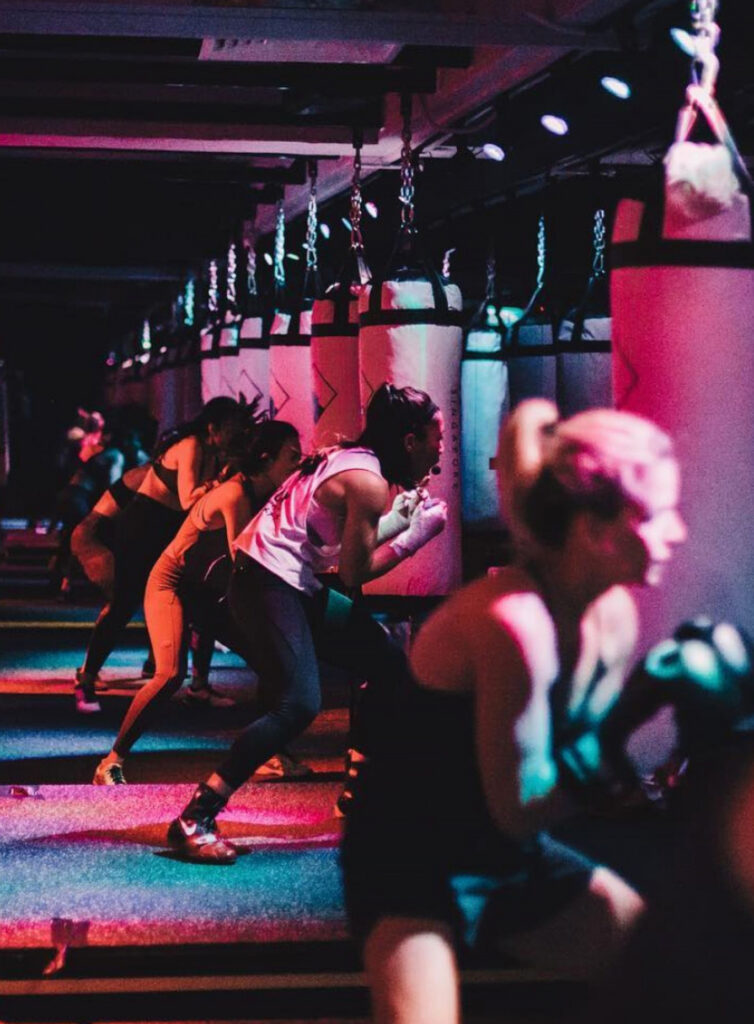
Last but not least, our sibling relationship is key. We were kids when we started out, in our early 20s, and we stepped on each others’ toes. But blood is thicker than water and our close relationship now underpins CRU’s sense of community. Being siblings determines how we run the company, which influences how our instructors feel about working for us, which influences customer perceptions. The sense of community runs deep. Our family values are why our brand is so strong.
How did COVID impact CRU?
In 2020, in response to COVID, we started creating our own content so customers could train at home. It started off fairly simply: only business owners were allowed to go into a business premises, so it was just me, Calvin and a single bike in our Duxton Road CruBox studio. There I was, on-stage, surrounded by boxing bags, teaching to Calvin behind the camera!
Eventually the government allowed us to bring in five instructors, on a rota, so we could offer a bit more variety in our content. We made the decision not to build our library by having our instructors filming from home, though. We wanted to ensure the brand experience was as good as it could be, even in those early days.
Our customers paid for this online content from the outset and we also rented out our bikes; within two hours of the Singaporean government announcing lockdown, we had already rented all 200 bikes. So, we had a revenue stream throughout COVID.
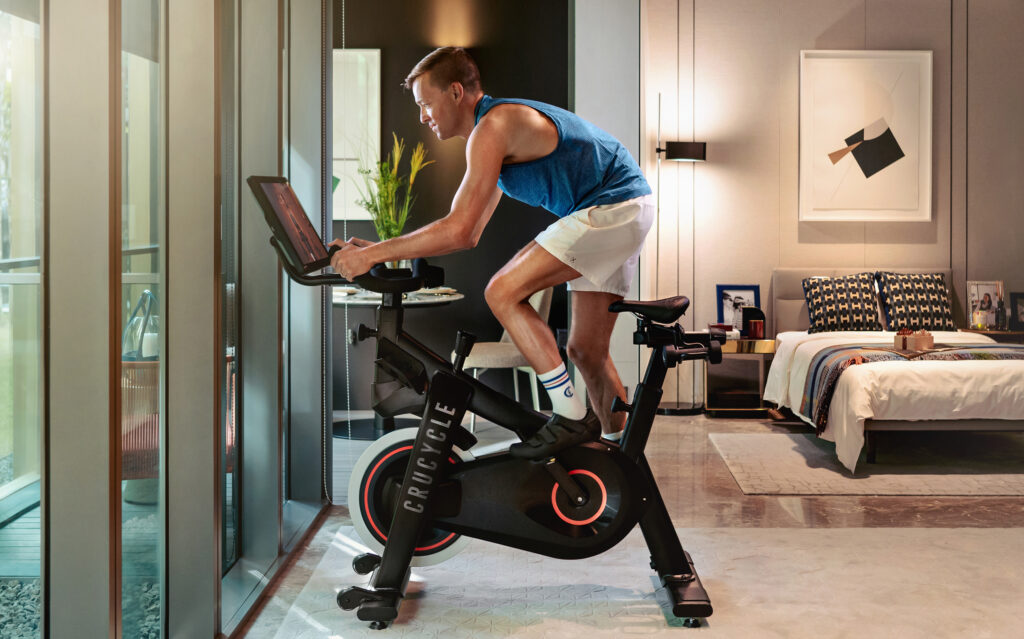
We’re also fortunate that our membership didn’t really worry about COVID. They were always desperate to train. We’ve had two major lockdowns in Singapore, but in between, every class has been waitlisted.
In our cycling studio, capacity was reduced from almost 50 bikes to just 12, so we put on classes every hour from 7.00am to 10.00pm to keep up with demand. Only now are we finally able to start scaling that back, with 25 bikes per class meaning we’ve been able to drop two classes a day from the timetable.
In a strange way, though, COVID was good for us. It gave us a chance to build our digital product and experiment with a few things. We tested our yoga concept in an outdoor space we had, for example, rather than having to build a new location straight away. Meanwhile, our HIIT concept came from seeing what people were enjoying online during lockdown.
We also continued our charitable work during lockdown, including a big campaign over six weekends where we ran Zoom classes and asked people to donate to take part. We raised around S$20,000, which we shared across a number of different charities.
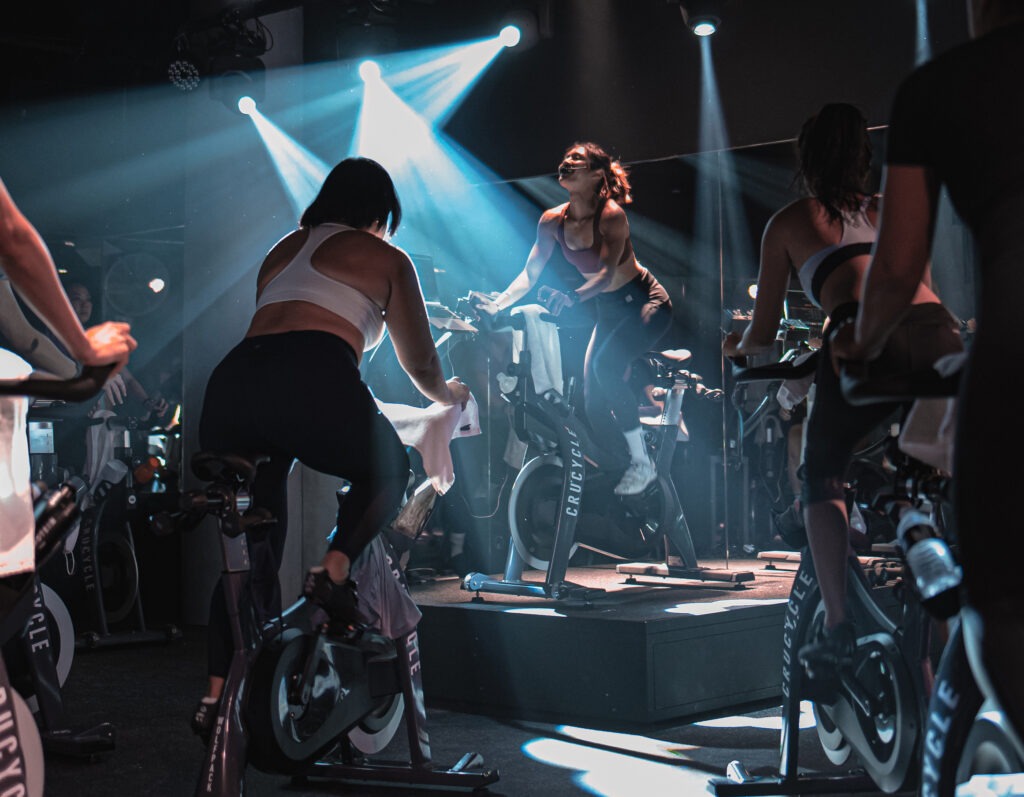
Tell us more about CRU TV.
Since early 2021, we have our own film production studio and our own CRU TV digital platform, and we’ve continued to evolve our content and its quality. Calvin now takes the lead on digital production, while Valerie is our marketing and PR expert and I’m CRU master trainer, in charge of instructors and programming.
We also have our own CRU TV Bike with a 21.5” screen, and since COVID started – combining bike rentals plus sales of our CRU TV Bike – we’ve had over 1,000 bike transactions.
“In a strange way, COVID was good for us. It gave us a chance to build our digital product and experiment with a few things.”
If you purchase our bike – at a cost of S$3,800 including mat, weights and cleats – it comes with a year’s free subscription to all our content. Alternatively, if you just want our content, a subscription costs S$49 a month. And our content is really strong, filmed from multiple angles and now diversified to encompass all our programmes: cycling, boxing, HIIT and yoga.
We’ve also recently launched meditation classes online; the flexibility of digital means we can listen to customer feedback and experiment with new concepts. As another example, we’re currently developing a road cycling-type concept to sit alongside rhythm cycling in our CRU TV library. This will just be online for now, but you never know – we’ve got used to plans evolving quickly and dynamically over the last couple of years!
And your physical growth plans?
We’re in a good place in Singapore. I think there’s space for perhaps one more location before we start to cannibalise our own clubs. Ours is a higher price point, as I say, and there are only a small number of neighbourhoods that can support that. Our main objective in Singapore is to continue filling every class to capacity.
And then in Los Angeles, obviously we only have CruBox at the moment; when we launched, although we knew we could do cycling really well, the boutique cycling market was just so saturated. That’s changed over the last two years, though, with lots of studios closing down and a lot of good instructors moving on from their former brands. South-east Asia is our focus for now, but we’ll never say never when it comes to the US.
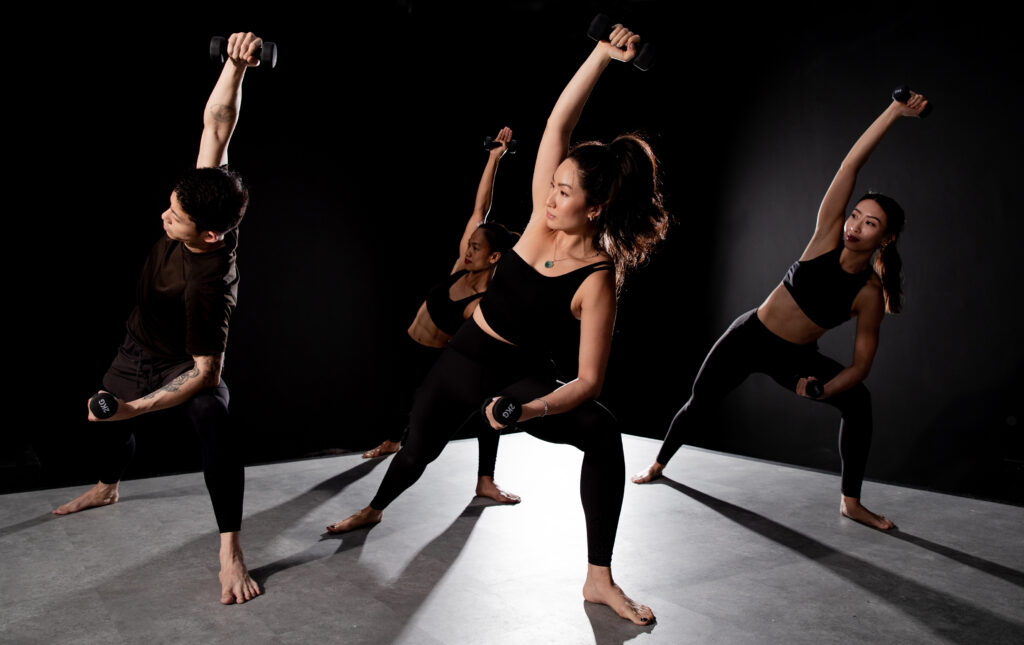
In terms of south-east Asia, before COVID we already had our eye on a number of potential markets to grow into, and the data we’re getting from CRU TV alongside enquiries for our CRU TV Bike – including from Malaysia, the Philippines, Tokyo, Indonesia, Hanoi and others – have validated our thinking. There haven’t really been any surprises for us in the data.
For now, while immigration rules keep changing, we’ll start with pop-ups – we have a number of these planned – but even after that, we’ll be careful in how we proceed. A lot of these countries are still developing and the law can make things tricky. In Thailand, just as an example, you need a local partner to launch any business. Yet of course, what makes us special – our brand, our soul and our story that’s all based on family – is very hard to hand over to someone else.
“I think we’ll expand into new markets in south-east Asia by next year, leading with cycling but most likely opening multi-purpose studios”
Nevertheless, I do think we’ll expand into new markets in south-east Asia by next year, leading with cycling but most likely opening multi-purpose studios to allow us to offer more than one concept in each location.
Any other plans you can tell us about?
We have a number of new lifestyle concepts in the pipeline: a coffee bar, for example, and food and nutrition including meal plans; I’m a qualified nutritionist as well as a master trainer. And as I say, we’re also continuing to experiment with our digital programming.
Ours is a story of constant evolution. Everything is always in progress. We’ve seen our audiences grow every year across all our concepts, but I still believe this is just the beginning for CRU.
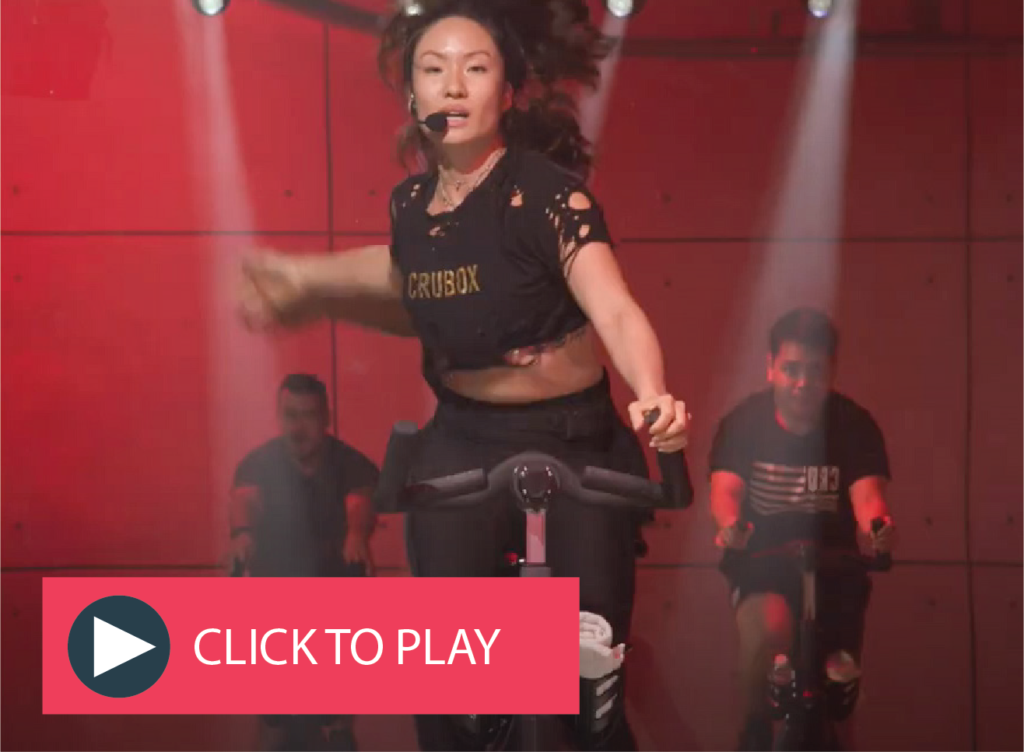
RIDE HIGH readers can enjoy a free 30-day trial of CRU TV. Just visit crutvofficial.com
and use promo code RHXCRUTV30 – valid until 31 December 2022.
United Fitness Brands
Why did you create UFB?
Even pre-COVID, businesses in our sector struggled: there were record attendances at boutique studios, but head office costs made it hard to make money. We realised there was an opportunity to drive significant economies of scale by joining forces, allowing each brand to continue to operate with autonomy but with head office functions centralised.
“Our strategy is to be the #1 destination for boutique fitness and wellness, with each brand the best at its own discipline”
Our conversations began during COVID, and in October 2020 we agreed heads of terms to join KOBOX and Boom Cycle, creating a new umbrella company – United Fitness Brands – of which Joe is CEO, Robert COO and Hilary marketing director.
KOBOX and Boom Cycle officially joined forces and launched as United Fitness Brands in March 2021. The following month we heard that Barrecore was on the market. We’re fortunate to have a strong team behind the combined business, with a very supportive board on which our backers Pembroke VCT, Nectar Capital and Dominvs Group all sit. Through these channels, we were able to raise funds to acquire Barrecore in May 2021.
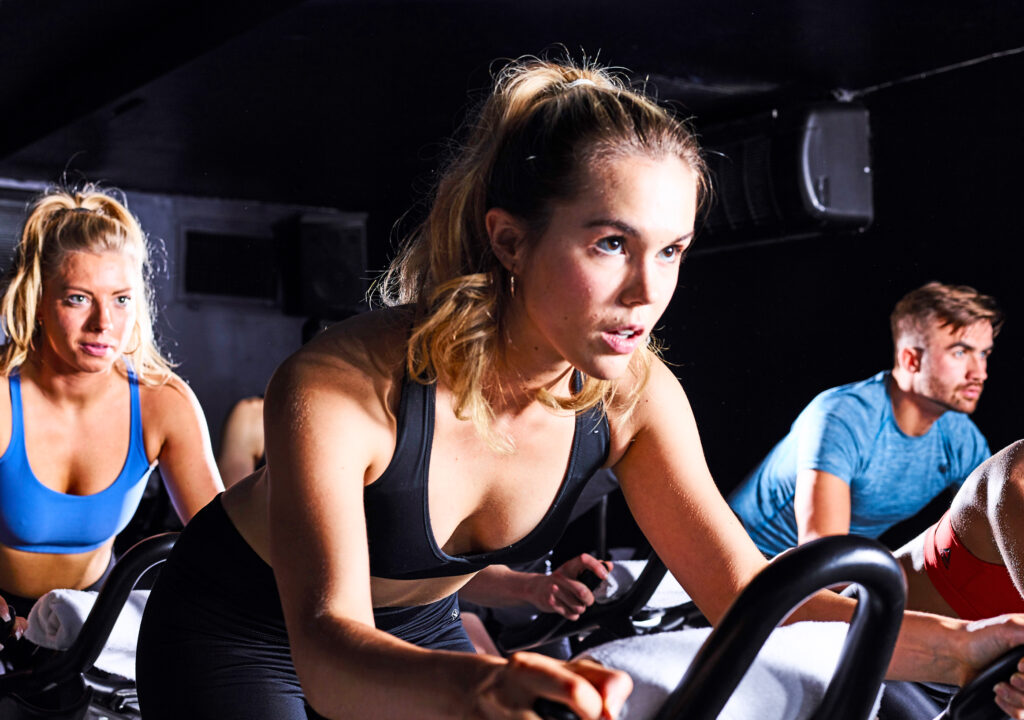
What is the vision for UFB?
Our strategy is to be the number one destination for boutique fitness and wellness, with each brand the best at its own discipline. We want to provide our customers with the best overall industry experience.
Meanwhile, for the businesses within UFB, it’s about building a single operational platform to achieve economies of scale for multiple brands and accelerate revenue.
We have four brands now, with Triyoga also part of the UFB portfolio since January 2022, and will bring in more over time; from the outset, we envisaged building a group that spanned six or seven different disciplines, as well as continuing to grow within each of those verticals.
UFB currently offers cycling, boxing, barre and yoga. Other potential disciplines might be dance, reformer pilates, non-yoga stretching. We’re looking to capture as much share of a consumer’s annual wellness spend as possible, by offering services within our portfolio that complement each other and that give consumers the products, services and content they’re looking for.
We’ll assess each opportunity as it comes, and it doesn’t just have to be bricks and mortar. It could include digital brands such as content providers, for example.
How do you explain UFB to consumers?
So far, United Fitness Brands hasn’t been consumer-facing. KOBOX, Boom Cycle, Barrecore and Triyoga each have their own passionate team and fans, so it’s important that each brand retains its autonomy.
However, we have been looking closely at how we explain UFB and the relationship between our different brands to consumers, because we’re launching a new Studio Pass membership option this month.
“We’ll assess each opportunity as it comes, and it doesn’t just have to be bricks and mortar. It could include digital brands.”
When customers log on to their favourite UFB brand website, they will have the option of sticking with the existing price structure to use that brand only. Alternatively, they can purchase a Studio Pass membership, with the benefit being that Studio Pass credits can be used at UFB partner brands as well – currently just KOBOX, Boom Cycle and Barrecore, but we will bring in Triyoga too.
The new pricing will make it advantageous to take up Studio Pass membership. There’s a one-week introductory offer priced at £30. Four classes a month is £60, eight classes a month costs £110, 12 classes a month is £150 and for unlimited classes it’s £180 a month.
We hope this pricing will woo people away from the aggregators. Data shows that on average, people visit three studios for three different disciplines a month, and it’s really exciting to offer that variety within our own group of brands. With our Studio Pass membership, you get to be a member of three – and soon four – best-in-class boutiques, all offering something different in terms of workout but all promising you the best 45–75 minutes of your day.
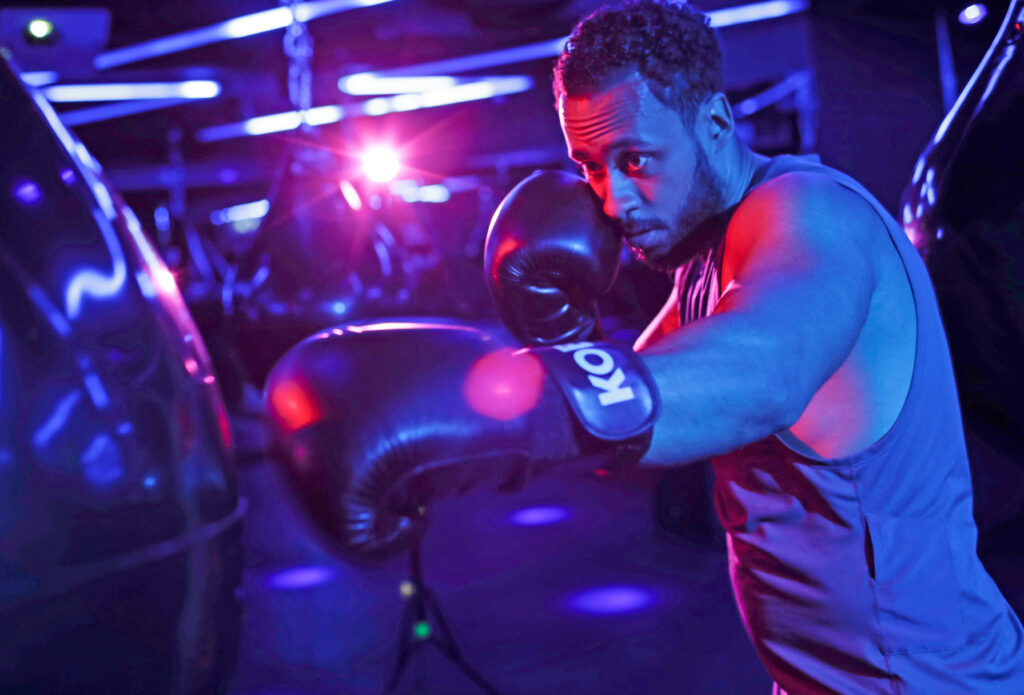
Upper body, lower body, cardio, calmness, flexibility, major muscle groups, smaller muscles… We’re making it easy for people to switch it up in their workouts and reap the physical and mental rewards.
And you have a new booking system…
Yes. Launching this month, it will allow Studio Pass members to book classes at Boom Cycle, Barrecore and KOBOX – and in time also Triyoga – all through one system. It will also be the gateway to live and on-demand digital content, starting with Barrecore.
Then behind the scenes, it’s about insights that allow us to improve the customer journey and run the business more efficiently.
“When we expand outside of London, we’re likely to build multi-brand locations”
Across UFB’s four brands, we have close to half a million customer accounts. That gives us an amazing opportunity to extract good insights into our customers and aggregate all this data in one place. In turn, that allows us to communicate in a more efficient, targeted way, offering our customers more of what they want: the classes they want, when and where they want them, as well as sending relevant offers for apparel, say.
For the business, then, this new system is about securing more accurate, current data, allowing us to make faster, more informed decisions: adaptations to our packages, our timetables or our staffing to improve the customer journey, for example. It will certainly present ecommerce opportunities, too, and could even give us insights into where we might expand physically.
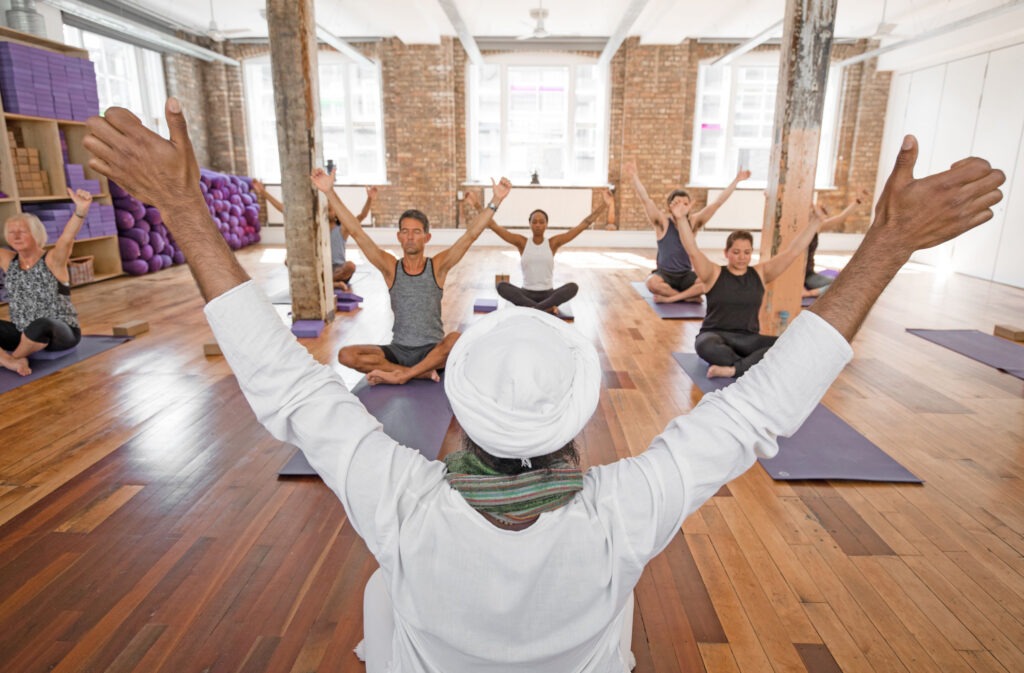
It simply wouldn’t be possible to invest in something like this as separate entities – we’re talking a five-figure investment and a system that’s taken many months to build – but together as United Fitness Brands, our distinct boutique operations are able to benefit from the sort of insights that normally only large businesses can afford.
Tell us about your multi-brand studios.
We opened our fourth KOBOX studio at Boom Cycle’s Waterloo location in July of last year, and when Barrecore’s Chelsea lease expired, we moved it in alongside KOBOX on the Kings Road.
Of course, with 23 sites across London, we already had a number of studios in striking distance of each other – and a good number of customers who already visited at least two of our brands – so it will be interesting to see what incremental crossover these multi-brand studios generate. It’s certainly too early to tell at this stage: people still aren’t really coming back into offices to work, so visit numbers remain down in locations like Waterloo. We’ll need more time to assess the impact of multi-brand studios in London.
What we do already know is that when we expand outside of London, which we expect to do towards the end of 2022 and into 2023, we’re likely to build multi-brand locations. Each will have a shared communal area, two or more studios and perhaps some wellness services – massages, for example.
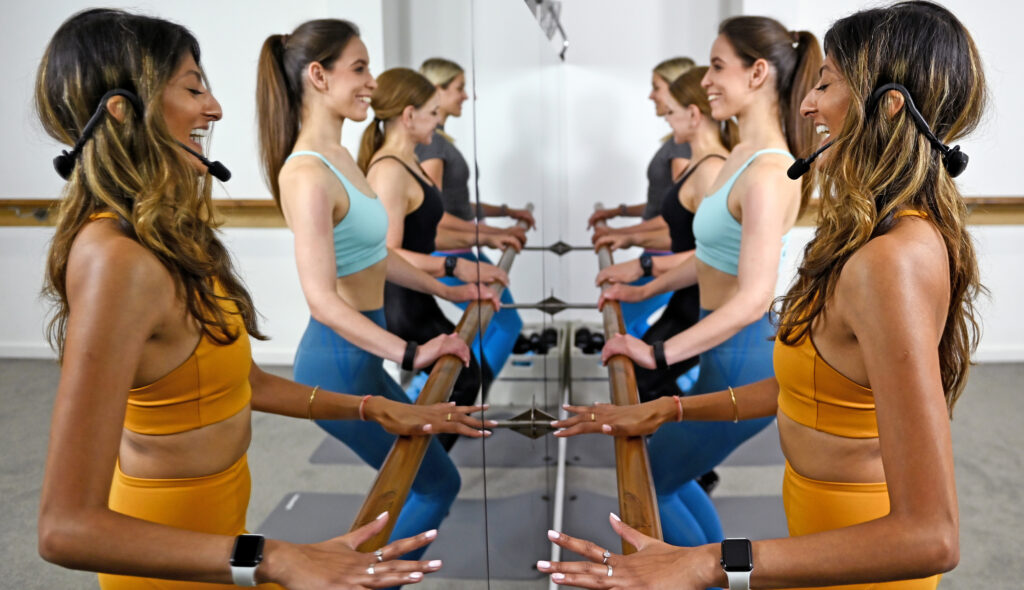
This will, of course, all be data-led. We know who our customers are and we know the perfect customer for each brand, so we’ll be able to identify which street in which city would work for each. And the great thing about UFB is that each brand can roll out independently or we can group them together to suit each location.
What are your growth plans for the next few years?
We now have 23 owned locations – four KOBOX, five Boom Cycle, 10 Barrecore and four Triyoga – as well as two Barrecore franchises in Manchester and one in Leeds, and thus far there’s been sufficient funding to grow the business through our own board.
“We have international growth aspirations, with our eyes on the Middle East in particular as an exciting opportunity”
In time, though, we will need to look at financing options for the next big step: we’re always having conversations and looking at potential sites, and there’s sadly lots of market opportunity post-COVID. That said, we are looking to embed our four brands before we make any further bricks and mortar acquisitions.
We will grow our number of brands and locations per brand in London, however, as well as outside of London, including multi-brand studios in smaller cities across the UK.
With these multi-brand studios in mind, we’re also starting to think more about branding. United Fitness Brands is rather corporate-sounding, so in time this name may disappear in favour of a new, more consumer-friendly name as yet to be decided.
Finally, we have international growth aspirations, with our eyes on the Middle East in particular as an exciting opportunity. There are lots of areas opening up to women in that region; if we could put something like boxing out there, we feel that would be a big step forward.
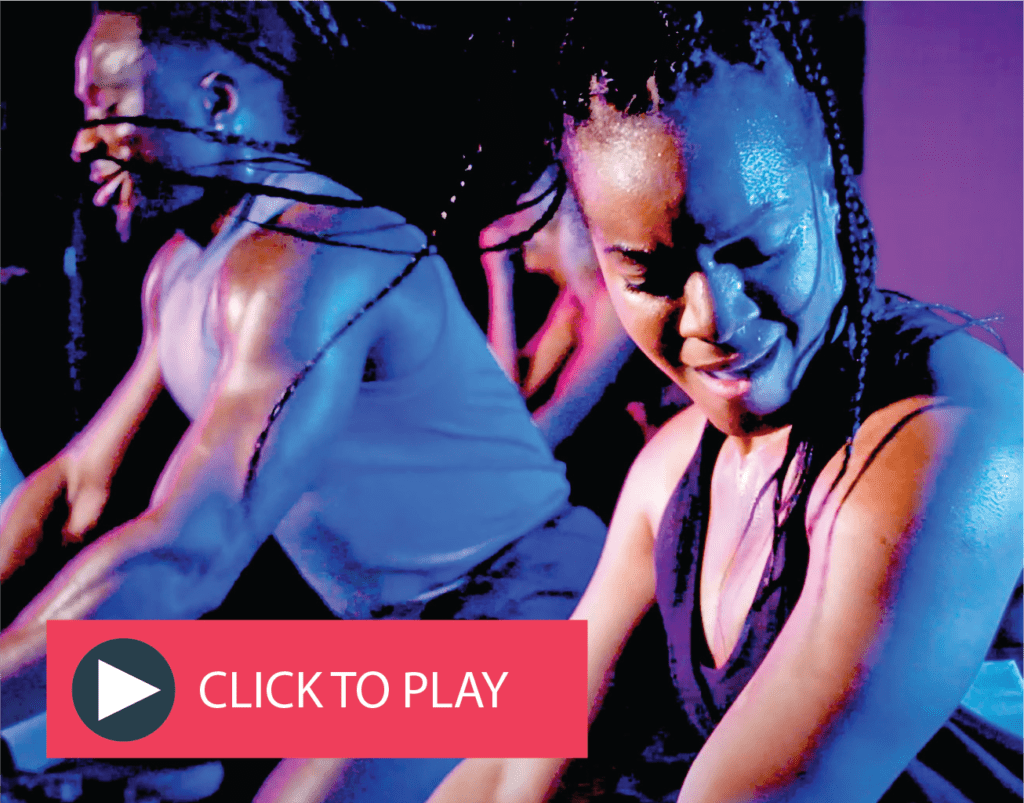
Align Your Stars
Over the past two years, our sector has been transformed. The hastily executed online pivot of March 2020 has been refined and embedded in our norm, accelerating us into a hybrid era that’s been brought forward perhaps five years for operators across the world.
That much has already been extensively talked about, of course. But what comes next is vital: ensuring clubs are delivering a true hybrid experience, not merely ticking the box of hybrid technology.
As the buzzword becomes ‘omnichannel’, operators should be under no illusion that digital can be a mere add-on. Moving forward, equal importance must be given to digital and in-person, ensuring the same user experience is delivered whatever the point of entry.
And when I say the same, I mean exactly the same. Every customer will use multiple touchpoints and expect to dive straight in to a familiar experience each time.
Clubs must therefore learn to view everything they do as one big customer-centric experience – and I believe this experience has to be led by content.
Content is the element of a health club offering that can transcend all boundaries. Where equipment is to a large extent anchored in a physical club, content is replicable on any channel: in-club, online, through an app, smart TV, smart mirror or other smart device.
“Every customer will use multiple touchpoints and expect to dive straight in to a familiar experience each time”
Content also happens to be what today’s fitness consumer – now well-accustomed to working out with on-screen trainers – seeks inside your facility and out.
Content creation is therefore no longer an adjunct to the business of running a club. It is the very cornerstone of hybrid success, underpinning omnichannel delivery of your club experience.
People power
Content is also where the money now is, so it’s hardly surprising that everyone from celebrities to media networks seems hell-bent on becoming a fitness content provider these days. Yet clubs still have a major USP: their in-house superstars.
Group exercise instructors have been key to member loyalty for decades, renowned for building communities of enthusiastic followers, but they’ve become even stronger during lockdown as their personalities, programmes and friendly faces reached beyond club walls and made us all feel better during the pandemic.
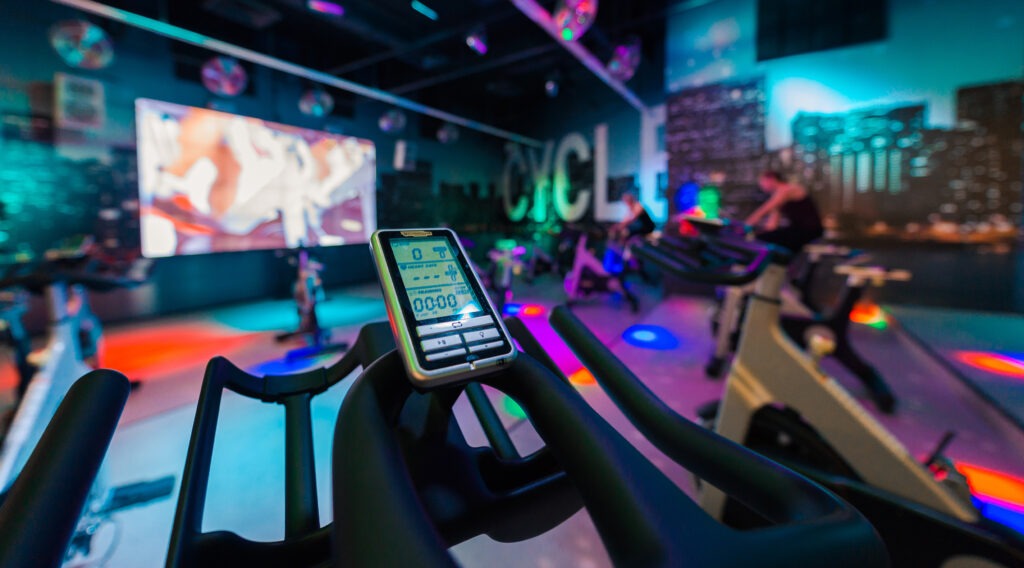
Clubs must recognise the power their instructors and trainers now hold. They are the content creators. They are the face of your brand in the digital arena. They are also the faces your members know and the people who, as channels to market proliferate, have the power to reach huge audiences.
If you’re looking for an advantage over the big digital players and the global fitness influencers who try and seduce your members away with their ‘three months for free’ offers and their Hollywood eyes, this – your team of local rockstars, whose relationships with members weld them to your brand – is it.
It therefore goes without saying that every club operator should be maximising opportunities to put their in-house superstars in front of customers, both on-site and at-home – and that means creating digital content fronted by them.
Of course, most clubs already did this during lockdown, but it was a kneejerk response to unforeseeable circumstances, with content often shared for free on third-party platforms. Moving forward, what’s needed is a sustainable strategy for the production of ownable, brand-enhancing, monetisable, local superstar-led digital content.
“Our data shows that the more fresh content you create, the more forgiving members are on quality”
A case in point
Why bother? Let’s take a look at Asia Pacific’s Evolution Wellness, which launched its web-based content platform – Virtual Studio – in partnership with Wexer in July 2021.
Fast-forward to January 2022 and our analysis of usage data to identify the most popular classes from Wexer’s global content library. To that analysis, we then added the content from Fitness First and Celebrity Fitness – two of Evolution’s brands in south-east Asia – and found that Evolution Wellness had 13 classes in the top 50 most viewed when aggregated across all our clients.
Clubs’ own content can be a huge usage driver, and in turn a major loyalty tool: the variety of Wexer’s global content library is what draws people to on-demand in the first place, but the locally-produced content plays a major role in keeping them there.
Self-produced content can also be a significant revenue driver. Recent Credit Suisse research found that 52 per cent of club members would be happy to pay for a digital tier to their membership, and our data backs this up: Evolution Wellness is projecting US$500,000 in Virtual Studio revenues for year one alone, all from existing members, with the lucrative prospect of non-geographically limited audiences as yet untapped.
Make the most of what you do
Producing digital content doesn’t have to be hard, either. Start by looking at your live timetable. Where are your superstars? Which are your waitlisted classes?
Maximise reach and ROI of these classes by installing a simple camera set-up in-studio and filming them; you’ll quickly compile a rich library of your own superstar-led content that can then be made available on-demand via your app, website, members’ smart TVs, even on the big screen of your in-club virtual studio.
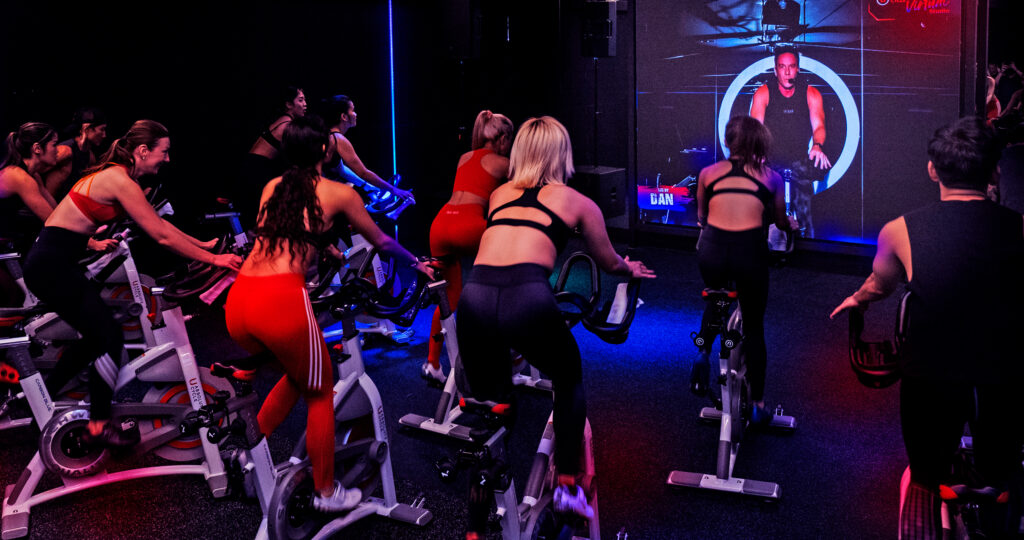
It doesn’t even have to be beautifully produced. Our data shows that the more fresh content you create, the more forgiving members are on quality: four pieces a day and it needs to look pretty slick, but get closer to eight pieces a day and it really is fine filmed as a fly on the wall of the live class studio.
Indeed, unless you’re a large multi-site operation with the budget to build and run specialist digital production studios, our advice is that you focus on getting the most out of everything you already do – all that incredible content you’re already producing – by filming it and making it accessible via multiple platforms, both digital and physical.
This, really, is the vital mindset shift. You need to see all your content as, well… content. Don’t mentally place in-person content and digital content in different boxes. Live in-person classes and workouts, live-streamed and on-demand sessions with your in-house stars, on-demand content from third-party providers to ensure strength in depth.… It’s all simply content that pours into one central repository, from which your members can pull the experience(s) they want via whichever touchpoint they choose – whatever channel works for them that day.
“Hybrid isn’t just a project. It’s a new model in which digital is a key business division that must be resourced”
I’m not going to turn this into a big Wexer pitch, so all I’ll say for now is this: all it really takes is a shift in focus and a sprinkle of technology. All of the above can be achieved with our ecosystem of white labelled digital solutions. Please get in touch if you’d like to discuss the Wexer API, SDK, App, Web Player or in-club Wexer Virtual; whatever point you’ve reached in your process of digital transformation, we can help you start or continue your journey.
Create a win-win
Of course, your content creators could feasibly go online themselves, independently of your club; there are influencers out there making millions. But your in-house stars are unlikely to have the database, nor necessarily the business skillset to build one. They have the talent and the mass appeal, but not the platform.
Meanwhile, your club has the audience – your database of members – and the pressing need to become omnichannel to better serve that audience.
Which is, of course, where it all aligns perfectly, with money to be made all round – provided you create a win-win scenario for both club and superstar.
To keep your content creators contributing to your brand rather than their own, you must find ways to incentivise and reward them for the incredible contribution they make to your now omnichannel business. We have a number of clients who pay their stars more for content that drives high usage, for example.
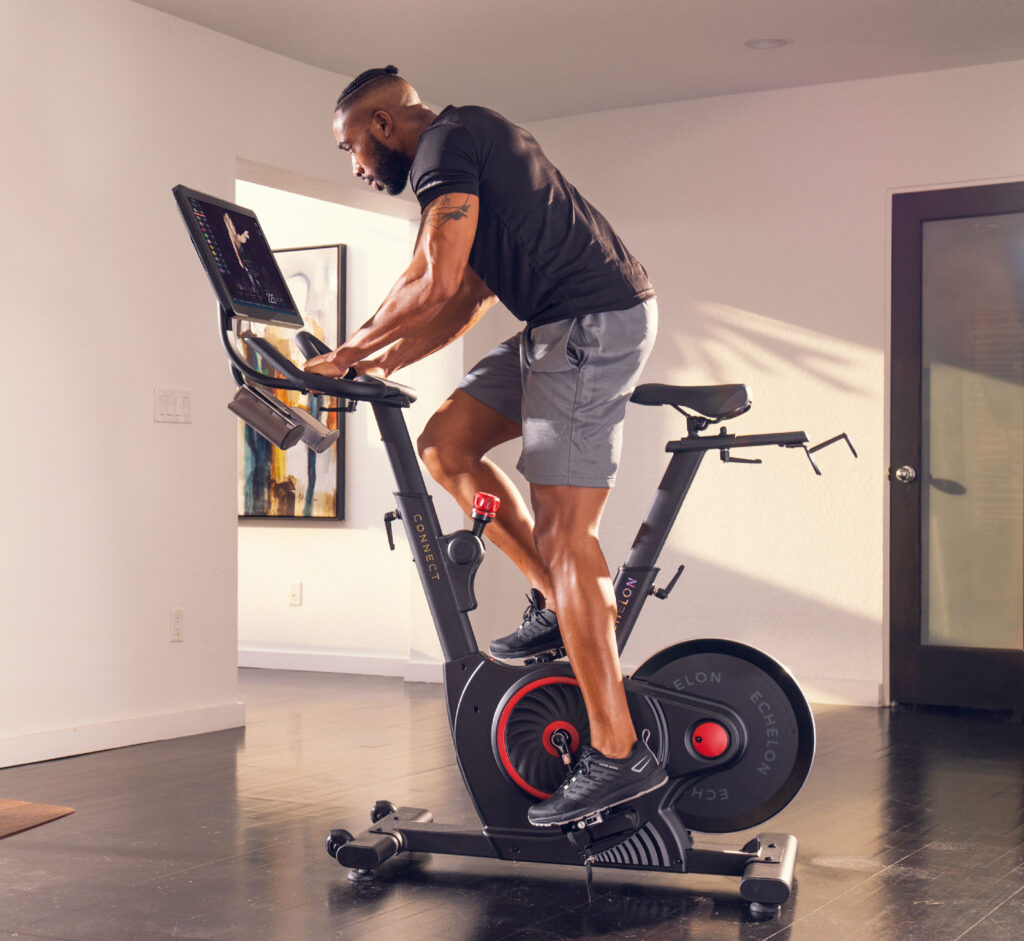
Nurture your talent, too, encouraging them to rise into the starring role you and your members need them to occupy. Empower and incentivise them to promote the content they create with you among their followers; when content is your product, you sell your talent and your talent in turn sells you. Help them grow their profile at the same time as rewarding them for their role in your success, to ensure their ongoing loyalty to your brand even as their reach and appeal grows.
In short, recognise that their success is your success, but work hard to ensure they know the flip side is also true: that they will do better with you than on their own. As usage and revenue rises, your operation will have more to invest in content, meaning superstars continue to grow… and so the virtuous circle goes on.
Yet underpinning this is a simple but vital secret: you have to fully commit. Hybrid isn’t just a project. It’s a new model in which digital is a key business division – one that must be resourced and prioritised.
Indoor cycling in a content-led world
“Virtual classes have long been used to meet off-peak demand and reduce downtime in studios. Indoor cycling is no exception – and with Wexer technology now allowing clubs to stream their own self-produced content onto the big screens of their virtual studios, operators have a chance to create a real buzz around their group cycle offering,” says Bowman.
“The first step is upping the ante on your live classes to make each of them a truly special event that members waitlist to be a part of. You want every live cycling class to be packed, so you might even consider reducing the number of live classes.
“Then put a basic camera set-up in your group cycle studio and record all these incredible live classes, capturing the energy of the room as well as the carefully selected rockstar instructor.
Once recorded, this content can be scheduled to run in any slots that used to be live instructor-led, as well as being made available on-demand the rest of the time. Your own signature ‘wow factor’ cycle classes are suddenly available whenever members come into the club.
“And of course, use of this on-demand content isn’t limited to your cycle studio. The number of people who now have a cycling option at home amazes me; we’re putting more indoor cycling content onto our Mobile platform to meet demand, with cycling already accounting for around 8 per cent of class views. When you consider the equipment requirement and the 1,500 different classes available in our Mobile library, that’s pretty impressive.
“As a club, there’s great value to be had in creating your own indoor cycling content.”
Reclaiming The Crown
What inspired this record attempt?
In 2009, aged 47, I was diagnosed as morbidly obese. I weighed 154kg, I couldn’t see my toes and it was a struggle to climb a set of stairs.
That same year, I discovered indoor cycling and have worked out on an indoor bike, six days a week, ever since. I’ve dropped 50kg and, now aged 59, feel fitter and happier than I did in my 20s and 30s. The social aspect of cycling classes at my local gym has also been hugely beneficial for my self-confidence and my overall mental and emotional wellbeing.
“Our World Record attempts are all part of our fundraising efforts to give kids and teens in under-served communities a happier, healthier start in life”
Inspired by this transformation, I made a career-changing decision and launched TRANSFORM-US Fitness for Kids. Based here in Australia, we deliver fun, structured PE and sports programmes into primary schools to help reduce childhood obesity, focusing on improving fundamental movement and object control skills.
As the years went by, though, I started to see a huge socioeconomic divide opening up. Kids from poorer communities were falling further behind in their learning and their overall health and wellbeing. In 2018, I set up the Fab to be Fit Foundation to help bridge that gap, raising funds to deliver our proven programmes in under-served communities.
Our World Record attempts are all part of our fundraising efforts to give these kids and teens a happier, healthier start in life.
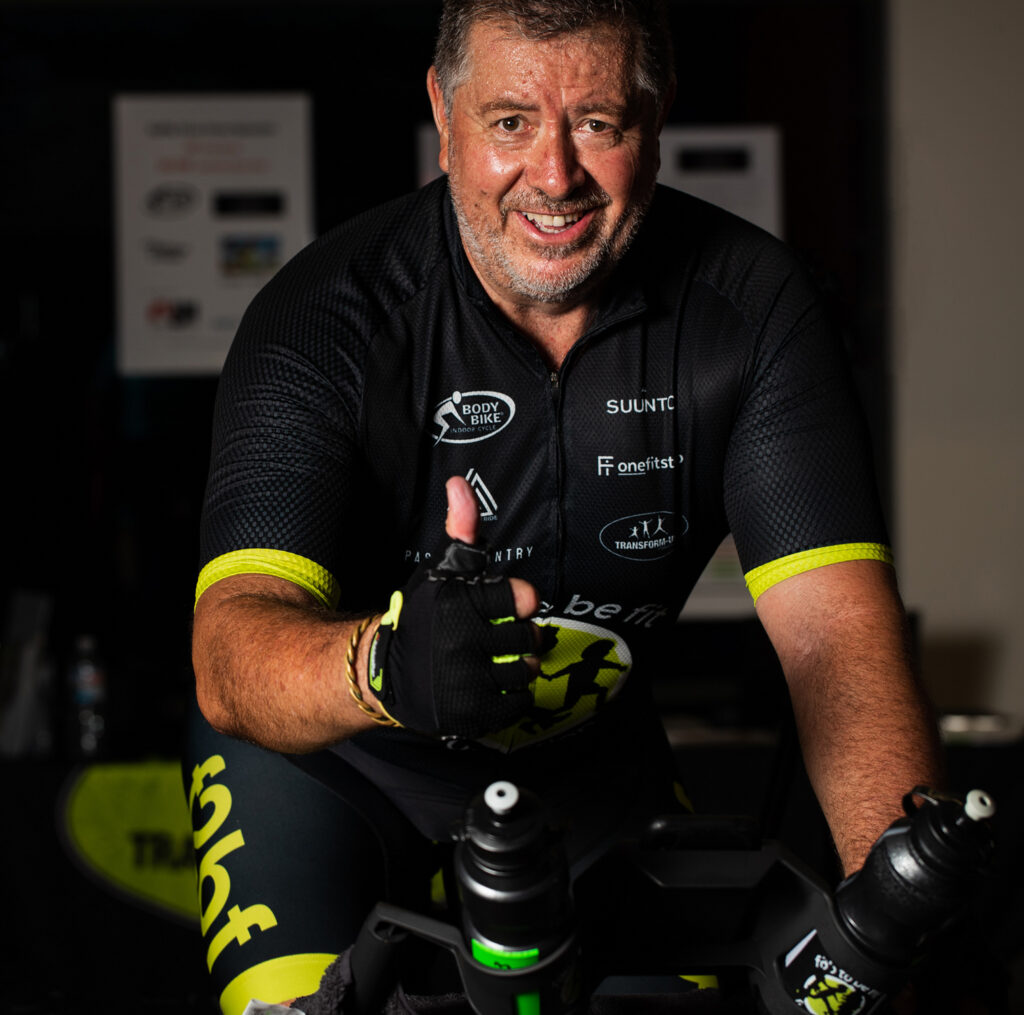
Why this particular World Record?
Sporting challenges feel very relevant to our goals at the Foundation, so our fundraising efforts include a lot of crazy physical and sporting challenges – entering teams into the Spartan Beast Race, for example.
As I mentioned before, I’m a regular indoor cyclist. Many of our volunteers and ‘friends’ are also outdoor and indoor cycling fanatics – a number of them have completed crazy ultra-endurance outdoor cycling events such as Race Across America, the Indian Pacific Wheel Race, 24hr Everesting, 24hr MTB events and so on – so we started to discuss an endurance-style fundraising event.
In early 2019, I came across the Guinness World Record (GWR) for Longest Static Cycling Class, which at the time was held by a team of New Zealanders and sat at 26hrs: 04mins: 24secs. Our team gladly accepted the challenge, and on the weekend of 31 August 2019, we set a new Guinness World Record of 27hrs: 00mins: 53secs, with every one of our 15 riders completing the challenge.
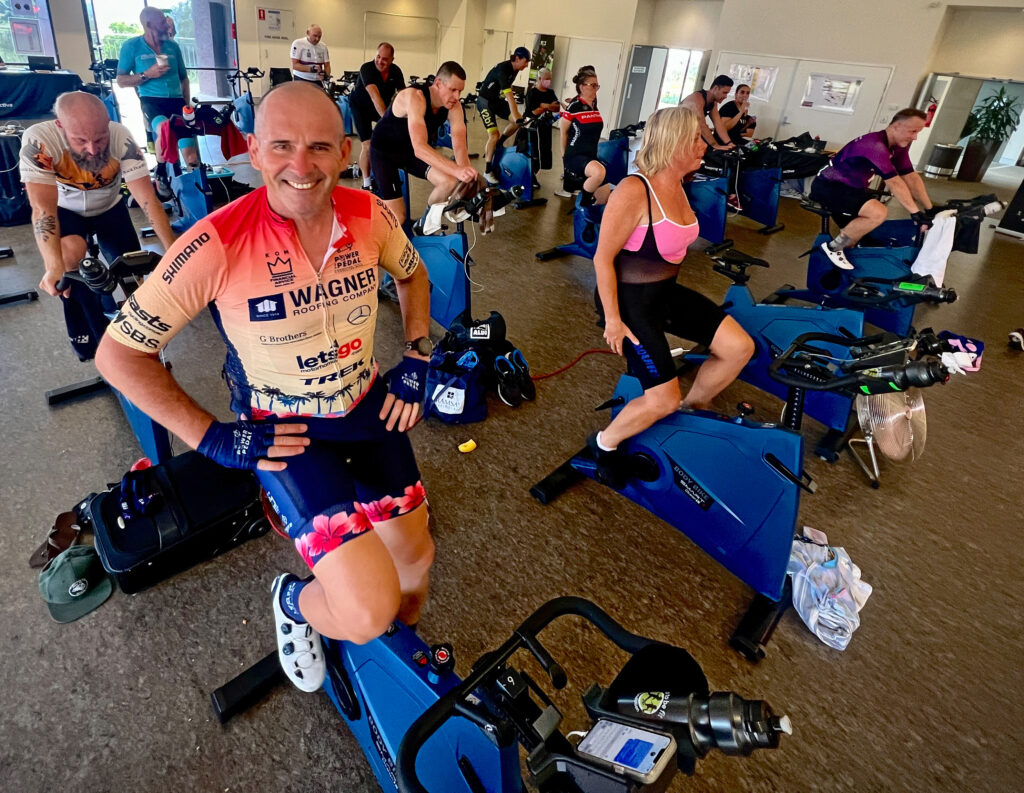
Sadly, during the early days of COVID lockdown here in Australia, a team of endurance cyclists from the United States officially broke our World Record, adding another hour to set a new time of 28hrs: 00mins: 00secs.
We decided we wanted to reclaim what we saw as ‘our’ World Record.
How did it go this time?
We were delayed by a couple of months due to Omicron, but in January 2022 it was finally time – and the short version is, we’re now Double World Record Holders having set a new record of 30hrs: 02mins: 16secs.
The longer version of the story is this… We had lined up a team of 18 riders, including our instructor James Lamb – one of six returning riders from our 2019 team. By the Thursday before the event, we had lost two riders to COVID, then lost two more on the morning of the event. GWR rules state that the class must be 11 people – 10 plus the instructor – so COVID certainly ate away at our safety buffer.
“For the 30 hours of the event, our instructor James Lamb had to learn the choreography to 330 tracks”
We started at 10.00am on Saturday 15 January with 14 in the team, lost one rider overnight to a medical situation, and finished at 4.00pm on the Sunday afternoon with 13 riders, setting a new World Record.
We each cycled between 725km and 870km over the 30 hours – an average of around 805km – and each of us burned on average 18,000 calories. Average per-rider watts across the 30 hours was 135, with one or two riders getting close to a 170-watt average, which I find mind-blowing!
We got some great media coverage to drive awareness of the Foundation, and even though events like this cost a lot to run, we raised a net profit of over A$12,000. This has gone straight back into the Foundation, allowing us to pay specialist staff to run our programmes free of charge in selected communities.
How strict are Guinness World Record rules?
Very – and you have to put a lot of measures in place to ensure compliance. First, you need two independent witnesses, two timekeepers and a steward in the room at all times during the attempt – we had them on four-hour rotating shifts – to ensure everyone is doing the right thing. You also need cameras in the room capturing continuous footage of the entire attempt from a number of different angles: focusing on the instructor, the digital timeclock, and all the riders.
The instructor must be the same person throughout and the whole team rides together for the entirety of the attempt. The ride must be structured as a proper indoor cycling class: the RPM of the music has to change – 60–90RPM for standing climb tracks, 105–130RPM for seated speed tracks, and so on – and as a team, you must follow the instructions and positions of the instructor at all times. The cameras pick up the cadence of each rider, establishing whether you’re in-time with the music and the instructor.
There’s no GWR requirement to provide wattage, calorie or distance data, though: we just had this because we were using the BODY BIKE app. For the purposes of the World Record attempt, the cameras just need to show everyone riding to the beat of the music and to the instructor’s directions.
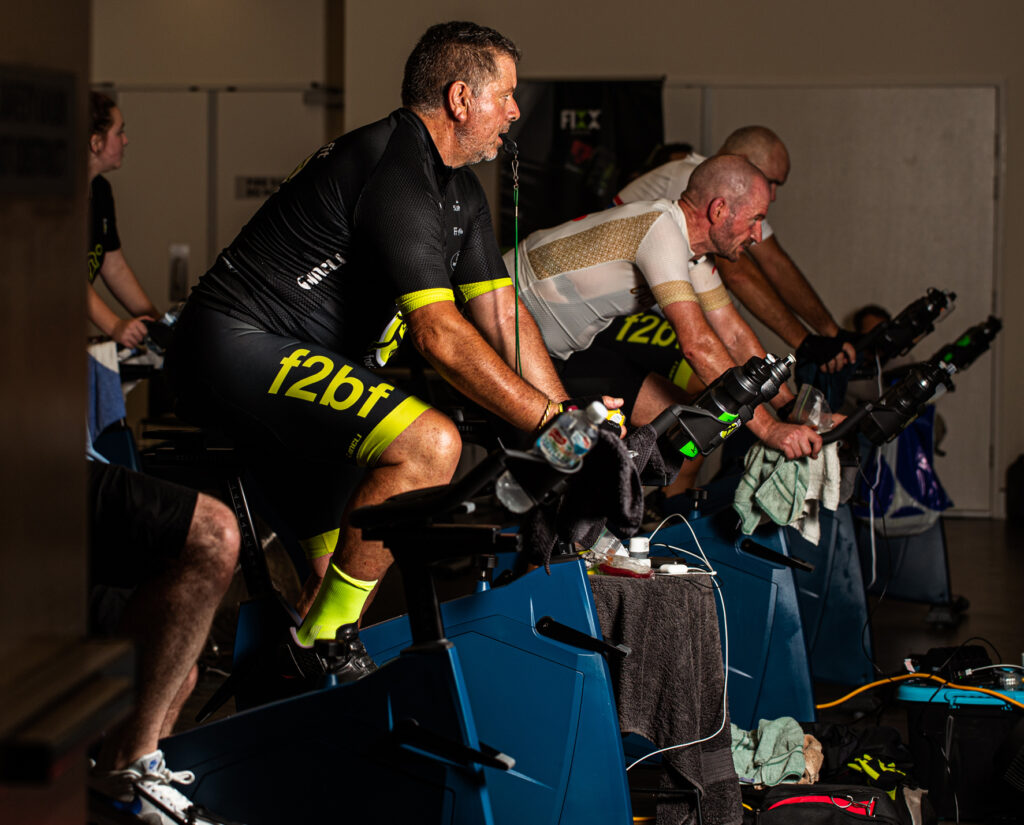
As in a standard indoor cycling class, there are very short breaks – 10–15 seconds – between tracks where you can stretch your calves, but Guinness World Record rules also allow a five-minute break after every hour completed, or 10 minutes after two hours. That break has to be taken together as a group, though: you can’t have individuals taking their break at different times.
I hung an A1 chart on the wall that mapped out our ride sequences and breaks, when meals would be brought out, when we had to be weighed and when we’d do a kit change. We had an accredited sports dietitian and her team on-hand for the full 30 hours, keeping us fuelled and hydrated and weighing us every six hours, and we learned to eat while cycling.
How did it feel to regain the World Record?
Speaking from my own perspective, this attempt was physically and mentally far harder than the first one: I hit the wall at about midnight this time, four hours sooner than last time. Even as we passed the previous record of 28 hours, I was still wondering whether I would be there to hit the 30-hour mark. It was a real sense of achievement and fulfilment to make it to the end.
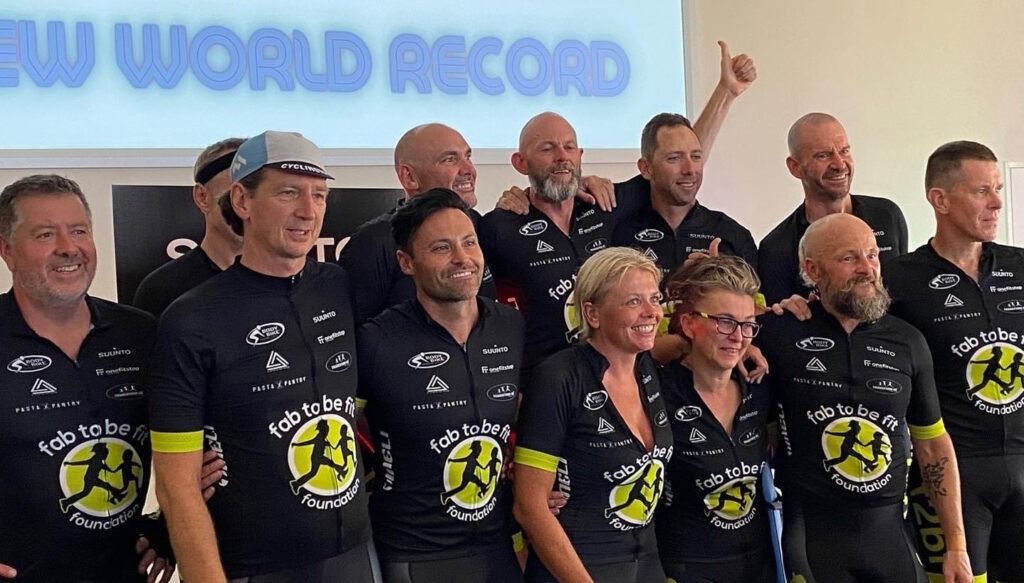
Would you ever do it again?
If anyone is stupid enough to want to take this record off us, they are most welcome to it. Twice is enough!
In fact, just before our attempt, James and I found out that a team in the UK had completed a 29-hour ride the weekend before, which was still being ratified. Luckily we’d always planned to do 30 hours, so we kept the news to ourselves rather than alarming our team. But ultimately, I’m sure someone will beat us at some point. And when they do, as I say, they’re most welcome to it. No way am I going again!
Anyone you’d like to recognise?
Our whole team was incredible: riders, volunteers, supporters, medical staff, dietitian and physio who pushed us through the pain barrier and back out the other side.
However, I would like to give a special shout-out to our instructor James Lamb, who also led our previous Guinness World Record. For the 30 hours of the event, James had to learn the choreography to 330 tracks – but of course, he was also under huge pressure to constantly review everyone, checking how we were looking and feeling, checking everyone’s cadence, pushing everyone along and making sure no-one fell out of sequence.
James really is the only indoor cycling instructor I would ever ask to take on such an epic event. To be able to manage a team through such a pain barrier and come out the other side, as well as focusing on his own highs and lows… What an achievement!
“If anyone is stupid enough to want to take this record off us, they are most welcome to it. Twice is enough!”
My thanks go too to Rupert Guinness – internationally acclaimed sports journalist, best-selling author, ultra-endurance athlete and one of our 13 riders – whose mental and physical strength and inspirational stories helped get our team through this challenge.
Finally, I’d like to thank BODY BIKE, who generously donated 30 brand new BODY BIKE Smart+ OceanIX indoor bikes for our event. Incredibly smooth and robust, these were the perfect bikes for our epic ride. They have since been fully serviced and sold to gyms around Australia as special limited-edition bikes.
A celebration of teamwork
So here we are, in 2022, celebrating 25 years of BODY BIKE: 25 years in which our bikes have fuelled a passion for indoor cycling across more than 35 countries.
The image opposite gives a feel for our evolution over the years, yet our story isn’t limited to our indoor bikes. From becoming a tech company and a magazine publisher to launching a category-defining eCargo bike under new sister brand BBCARGO, the last 25 years have been characterised by boundary-pushing.
They have also been characterised by teamwork, both within BODY BIKE – with a number of us here from the very beginning – and with our fantastic partners around the world.
Teamwork emerges as a theme throughout this edition of RIDE HIGH, too, from the sibling partnership behind CRU, Singapore’s ‘O.G. of indoor cycling’ to the co-founders of UK-based boutique supergroup United Fitness Brands, to the Herculean effort of the Australian team who recently reclaimed the World Record for longest static cycling class.
Reading all their stories, it feels like good news is finally dominating the headlines.
Yet there’s still so much uncertainty in the world, which is why we made the difficult decision not to exhibit at FIBO last month. We always pride ourselves on our show-stopping stands, from New York apartments to spaceship and everything between, and it simply wasn’t feasible to confidently plan something like that this year.
We’ll be back with a bang at FIBO 2023, but in the meantime, we’ve donated some of this year’s budget to Danish Red Cross in support of Ukraine. I feel passionately that in times like these, we are defined by our willingness to stand together.
In fact, I believe a willingness to stand together is a big part what defines us generally, in life and in work. So I end with a thank you – because as BODY BIKE celebrates its big birthday, we do so knowing we couldn’t have done it alone. To all of you who love the ride as much as we do, thank you.
Uffe A. Olesen
CEO, BODY BIKE International A/S
A New Cohort
If we asked you to name one brand you most associate with the at-home fitness boom, what would that brand be?
Chances are it would be Peloton – and for good reason, with its millions of users and soaring revenues through lockdown. Things may have slowed down for the megabrand over recent months, but there’s nevertheless a huge global community that’s already invested in its bikes and become accustomed to the brand’s slick, customer-centric way of doing things.
And of course, Peloton is just one of a large number of brands that have entered the connected, at-home cycling space.
So, what does this mean for clubs and studios?
Positive return figures from operators around the world show demand is absolutely still there for the social, in-person experience; your group cycling fans from before lockdown will likely still be your group cycling fans now, provided your classes bring them value above and beyond what they can experience online.
Nevertheless, the future does seem to be hybrid, with these fans coming to your club or studio when it’s convenient and training from home when it isn’t.
But what about those individuals who weren’t members of a club before, who bought an indoor bike as their way of staying active during lockdown? And what about your returning members who didn’t previously do your (perhaps a little daunting) cycling classes, but who were drawn to the intimidation-free at-home cycling experience during the pandemic?
How do we get these indoor cycling newcomers into our studios and engaged with the in-person experience? Our panel of experts share their thoughts and advice.
Barbara den Bak
Founder, HIGH STUDIOS | CDO, Urban Gym Group
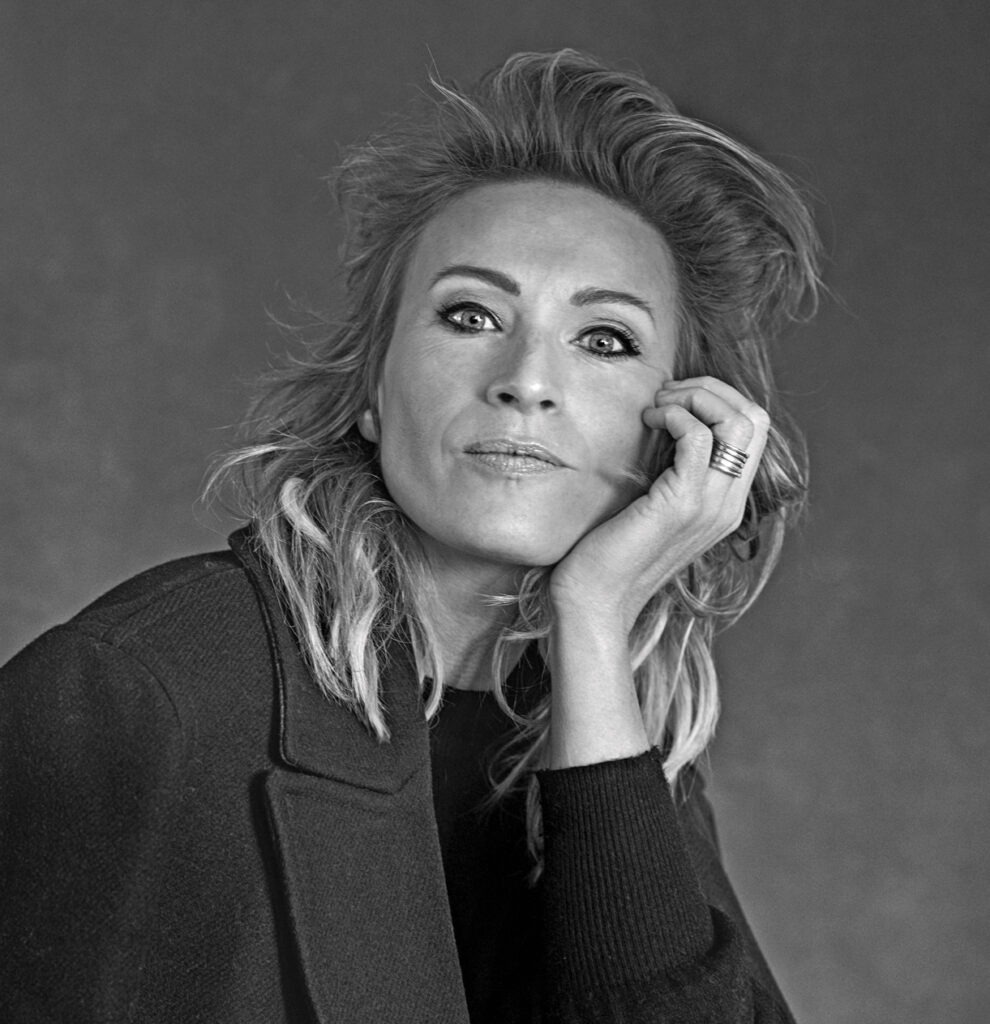
My thoughts on this topic come from my own lockdown experience.
In September 2021, we opened our first multi-studio, with our new concepts – HIGH FLOW hot yoga and HIGH RIDE indoor cycling – alongside our signature HIIT class, HIGH RUN. Then, almost immediately, we went into lockdown again.
We shot a few simple videos to offer all our members for free, and I had a bike in my house to test the RIDE concept. I immediately felt a huge experiential gap between the live class environment and a single instructor on-screen telling me what to do. I didn’t enjoy it.
I started looking around online and came across an incredible cycling instructor, Kristina Girod, who films classes from her studio in Arizona. The way she does it, you can see the whole room. The studio’s full of participants, the music’s amazing, she has a really powerful presence and you can feel the energy coming through the screen.
“During lockdown, I immediately felt a huge experiential gap between the live class environment and a single instructor on-screen telling me what to do. I didn’t enjoy it.”
It transformed not only my at-home experience but my feelings about indoor cycling generally. I’ve always been more of a HIIT girl – I initially found choreography on a bike hard – but doing Kristina’s classes at home has given me confidence. I feel ready for the studio.
But to actually get me – and others like me – into the studio, we have to show people what they’re still missing at home. We have to create FOMO. My experience of following a face-to-camera instructor? That won’t work. But seeing a really cool instructor leading an incredible class, feeling the energy, getting a sense of the additional motivation and advice you would get in-person… It makes you want to go in and do a class with them in real life.
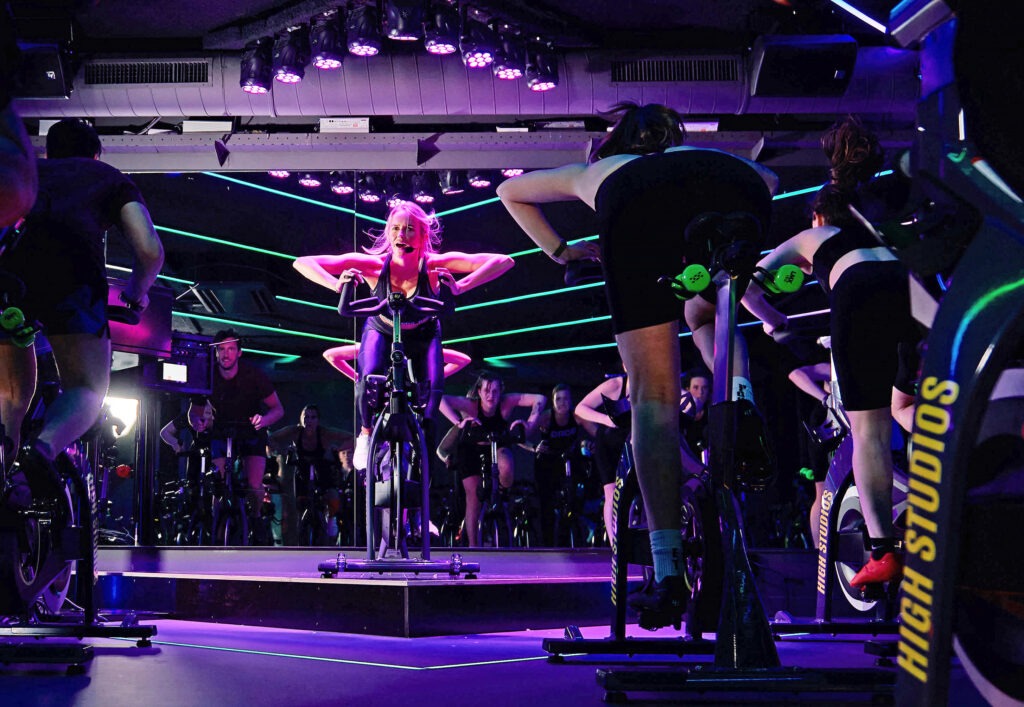
So, this is my advice to clubs and studios: shoot classes for your digital channels – it doesn’t have to be expensive – and show the whole class. Pick your top instructors. Do everything you can to show how cool it is to be in your studio. Then share at least some of this content on your social platforms and website, not just with members.
I know some of the big studio cycling brands won’t do this – their classes go on behind closed doors – but I think it’s beneficial not only for your own studio but for studios around the world. I can’t go to Arizona to do Kristina’s class, but seeing her energy makes me want to find a studio locally that can give me a similar in-person experience. It will help us all if we put our energy out there.
“Share at least some of your content on your social platforms and website. It’s beneficial not only for your own studio but for studios around the world. It will help us all if we put our energy out there”
We will certainly do this for HIGH RIDE, and I have no fear that it will stop people coming to our studio – and potentially studios plural, as I can see us opening standalone HIGH RIDE and HIGH FLOW studios in the future. People will cycle at home as well, but we’re all too desperate to get out of the house for at-home workouts to replace in-person classes.
Another thing we do at HIGH STUDIOS which is very useful for newcomers is make it really clear on our website what to expect in class. We spotlight our trainers, their style and approach to choreography, even their playlists, so you can choose the exact in-person experience you want.
Finally, and this relates specifically to our multi-studio, we place a big emphasis on cross-promotion of classes. That includes training our instructors to cross-teach so, for example, they can encourage their HIIT fans to try a yoga class with them too. We also do special HIATHLON events – a 20-minute ride, 20 minutes of HIIT then 20 minutes of yoga. This crossover is also likely to bring new people into our cycling studios.
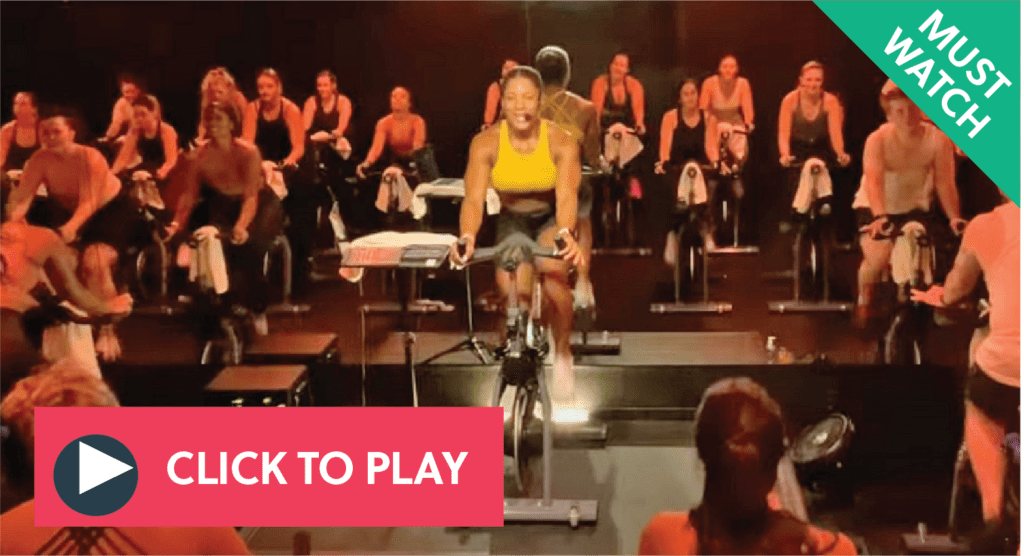
Emma Barry
Global fitness authority | Chief Creative Soul, Good Soul Hunting
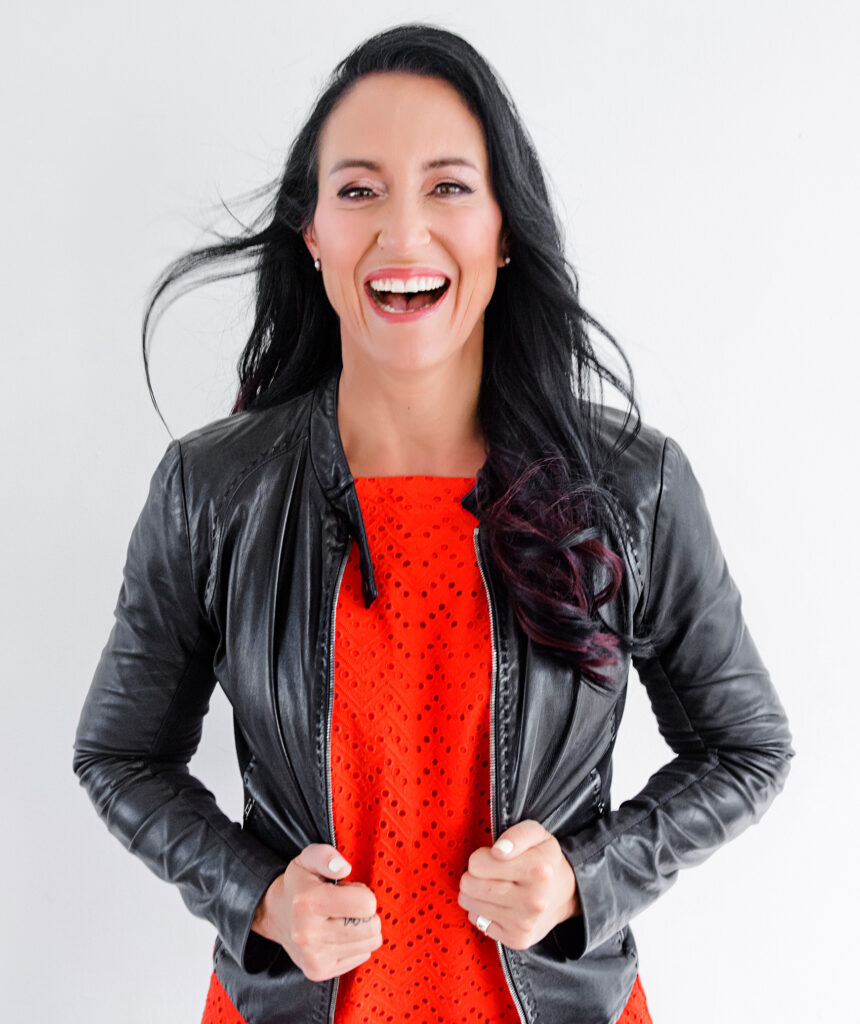
“Live has got to get better. If I bother to be in the room, you had better bother to make it worth my while.”
Tune in to the global guru that is Emma Barry as she takes us through two caveats, five mega-trends and five calls-to-action to entice at-home cyclists to the in-club, in-person experience.
Expect pearls of wisdom on:
- Reframing re-opening as opening for the first time
- Embracing 2022 as the year of workout variety
- Lifting our live game and dialling up the FOMO
- Becoming social Pied Pipers, whereby ‘can’t’ becomes ‘can’
… and far, far more besides!
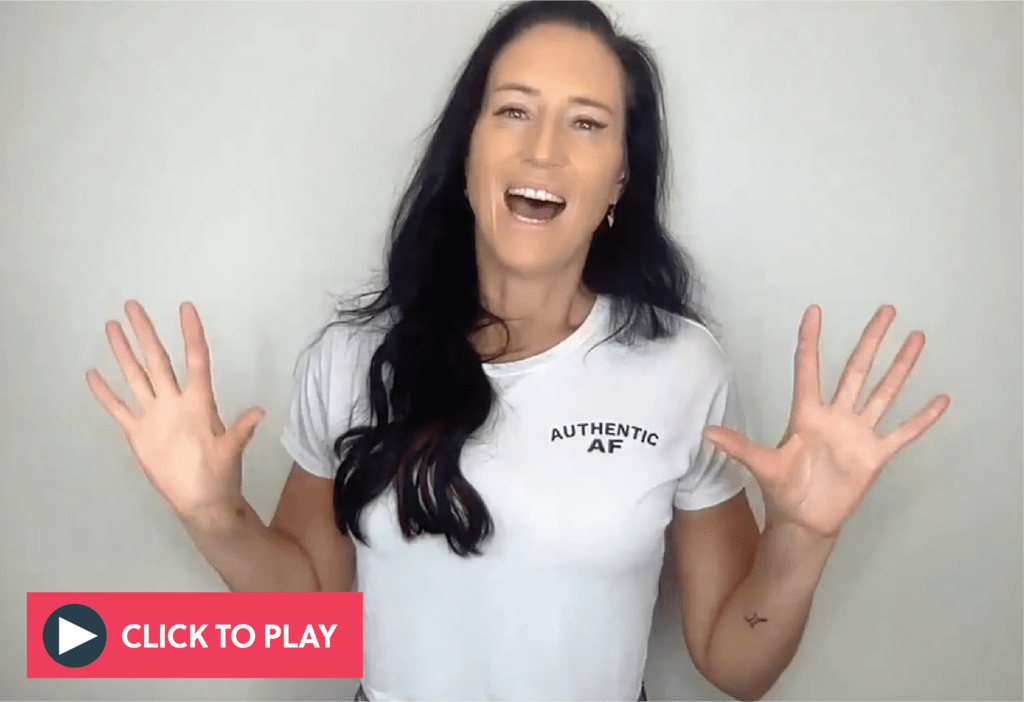 Set aside 10 minutes of your life to check out this video. Your business will love you for it!
Set aside 10 minutes of your life to check out this video. Your business will love you for it!
Ben Karoonkornsakul
Founder & CEO, The Absolute Group

Alongside our studios in Bangkok and Singapore, we also offer at-home fitness: we sped up the launch of our Home Edition bike when lockdown hit and have sold or rented 700–800 bikes.
Around 60 per cent of the customers who have a Home Edition bike were members of our studios before the pandemic. They were already brand enthusiasts and wanted to continue to exercise with us even when they couldn’t leave the house. Our bike – with its integrated screen streaming Absolute content into their homes – was the perfect solution.
For this group, returning to our studios will happen naturally. In fact in Singapore, where the market is a little younger, all our classes are already over-subscribed. In Bangkok, people are still more fearful and are taking their time to return; we’re even seeing people making an experience of their home workouts, with groups of friends and family putting all their Home Edition bikes together in one of their houses to enjoy group rides!
But they know how great our in-person experiences feel. We’re confident that when the fear of COVID has finally gone, those who were members before will come back, settling into a hybrid pattern of both at-home and in-studio classes.
“We’ll create exclusive events for Home Edition members to come in and meet the instructors they’ve been training with on-screen for so many months, but never met in person”
The challenge is with the other 40 per cent: the Home Edition customers who became first-time riders during lockdown. Can these customers be migrated into our studios?
We certainly aren’t seeing many of them coming in yet. They feel safe at home and they don’t know what they’re missing, so they’re staying where they are.
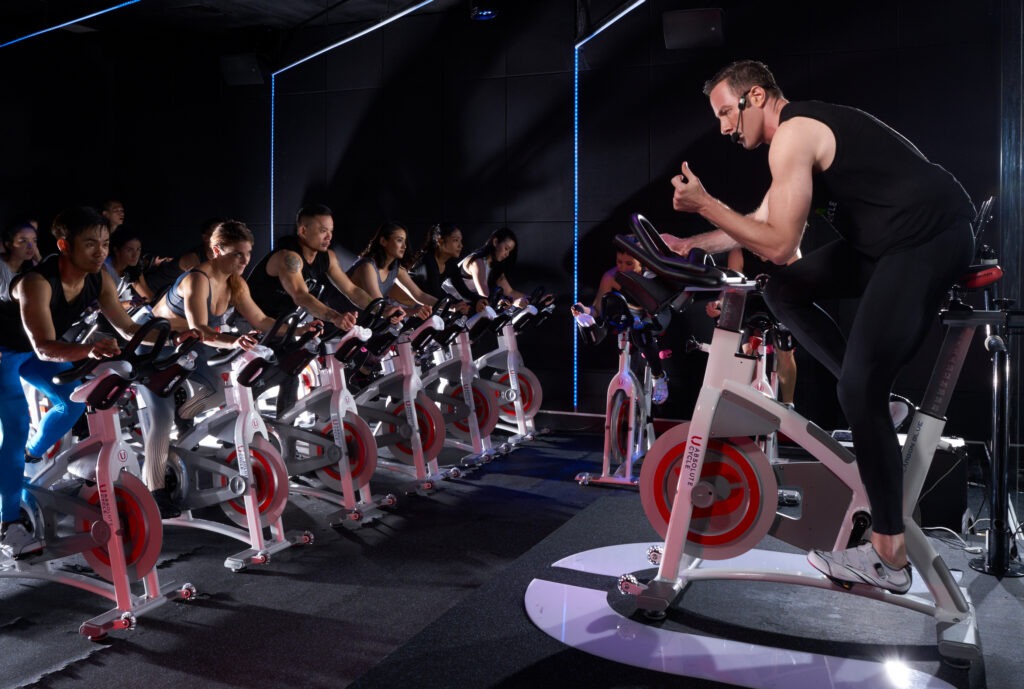
Even longer term, it’s important to understand the motivations for purchasing our bike in the first place – including geography. In Thailand, our studios are all in Bangkok, which means people living elsewhere may never attend in person. They’ve chosen at-home cycling purely as a simple but effective class to follow on-screen. Absolute is a strong brand in our markets, so they’ve found their way to our bike. And commercially, as long as they continue to subscribe to Home Edition, that’s fine by us.
In fact, digital is set to become an even bigger focus for us as we finally get to trial our Absolute X hybrid club concept in Singapore. We believe there’s a huge market for virtual fitness, not least due to the shortage of good instructors, so Absolute X has a big virtual studio – including live streaming top classes from other Absolute studios – alongside in-person instruction. With this second distribution channel, we’re very happy to continue investing in high-quality digital content.
That said, when the time is right, we will try and encourage those in the 40 per cent group who live near our studios to experience an in-person class. We’ll offer lots of free trials and introductory discounts, not just for cycling but also for yoga and reformer pilates, giving people even more reasons to come in and experience the live ambience.
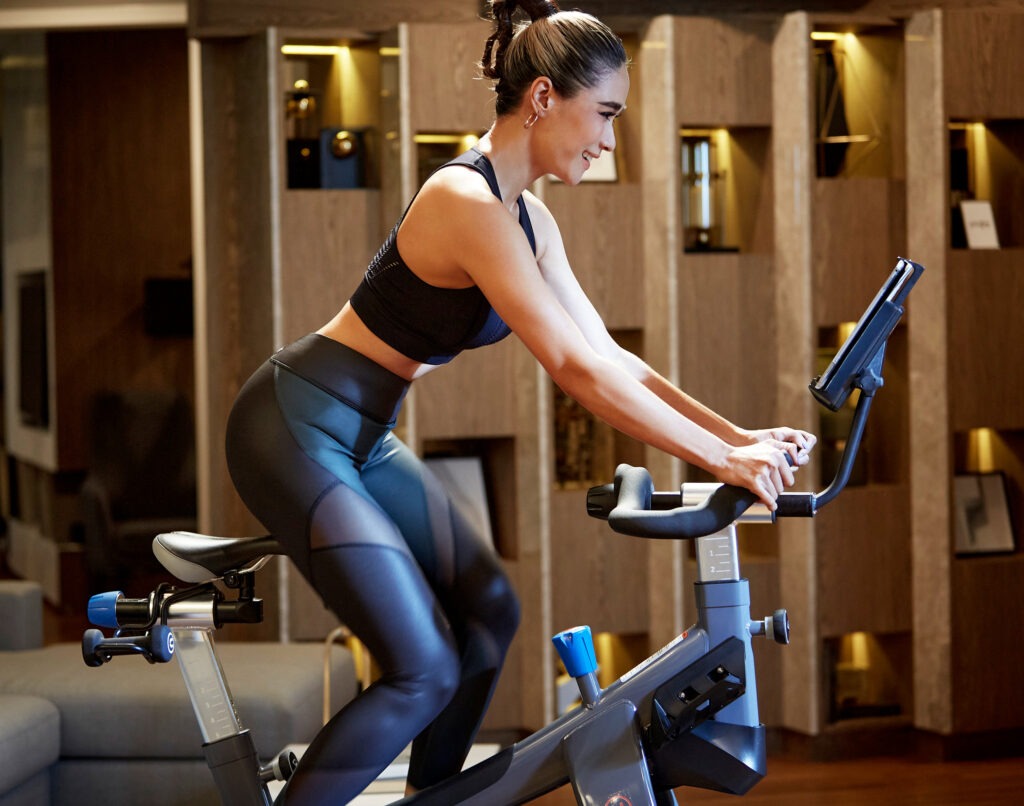
We’ll look at bundling Home Edition + studio memberships; use our Home Edition bike screens to show off our studio vibe; and use social media to drive awareness and understanding of how different in-person really is. We’ll also create exclusive events for Home Edition members to come in and meet the instructors they’ve been training with on-screen for so many months, but who they’ve never met in person. They’ll then do a special class with that instructor – a dedicated class just for Home Edition newcomers, so they don’t feel out of place.
As I say, if we can’t get all Home Edition members into our studios, commercially it isn’t a big deal. However, we know our studio environment, experience and community are big drivers of satisfaction and retention, so where relevant, we will try to engage them in-person too.
Power Play
What’s the difference between heart rate and power training?
Put simply, power is the ultimate training dose, while heart rate (HR) is a response to the training dose.
What do I mean by that? Heart rate training has been around for many years and it’s an important and valid metric. It shows the intensity of your intention – how hard you’re trying to push yourself. That’s very useful for instructors in particular, allowing them to read the room and understand the effort each participant is putting in. With the addition of colour zones, it’s also easy to understand and can be very motivating in a class environment.
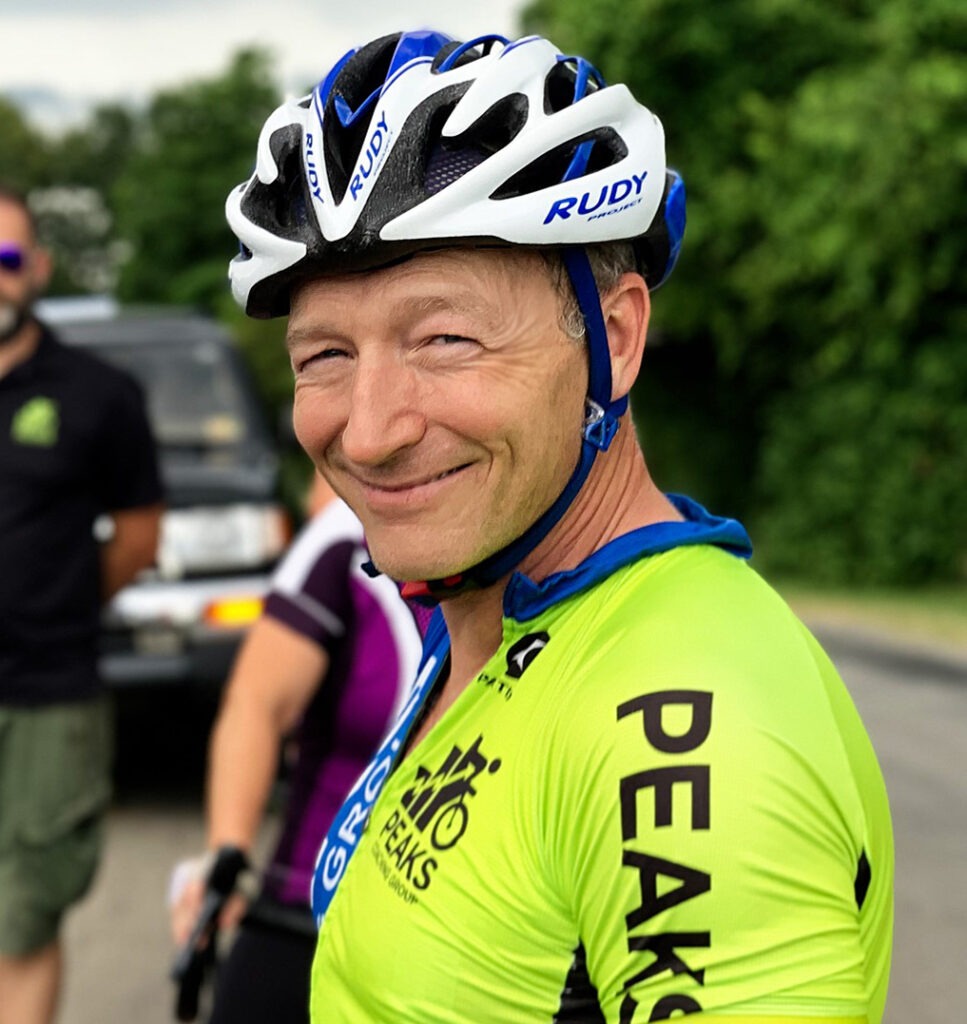
However, the issue is this: there are many factors that can impact someone’s heart rate. It isn’t exclusively a response to training. Yes, your heart rate could be high because you’re really pushing yourself in your workout. However, it could also be high because the room is too warm and you’re over-heating, you’ve had lots of caffeine, you’re stressed, or because of a number of other external factors.
In short, HR training tells you how fast your heart is pumping, but it doesn’t tell you why. It can also vary quite notably from day to day. Plus, heart rate zones are based on your max HR – a figure that doesn’t change as you get fitter. It means you can’t easily track or build on your progress.
How is power different?
Whether you’re in a studio or on the road in the rain, 200 watts is 200 watts. This is why I refer to power as the ultimate training dose: you can very precisely specify a number.
Let’s take the analogy of weight training. Month one, you might have 20kg on your bar. Next month it’s 30kg, a few months later it’s 50kg. The weight is your training dose and the rising number reflects the progress you’ve made. It’s the same with wattage: you can see your improved performance on the power meter of your bike as your output rises from 200 to 220 to 240 watts over time.
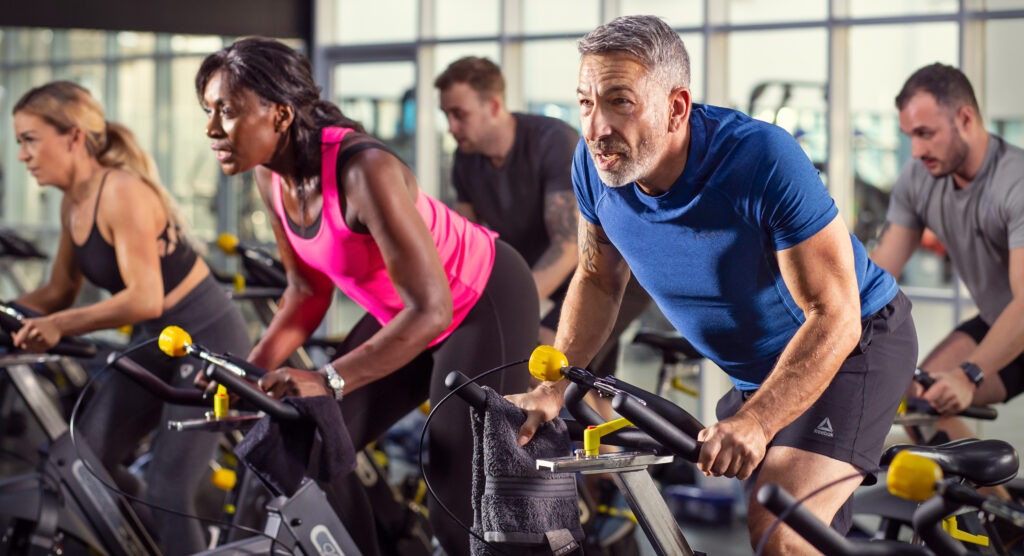
Then there’s a measure called FTP – functional threshold power – which is a great tool for a class environment. Every individual can calculate their personal FTP, which is directly related to their fitness level. Rather than specifying a wattage, an instructor can then specify an FTP percentage they want the class to ride at. In turn, this ensures every individual is working according to their current fitness level – but also at exactly the right load for the training goal.
I say ‘current’ because your FTP will rise as you get fitter. If there’s a day when you’re tired or stressed, you may not hit the same output as on a day when you’re fresh, but overall – over time – your FTP will increase as your fitness improves. That provides a great sense of accomplishment and motivation to keep going.
How does FTP work?
Your functional threshold power is the highest average power (wattage) output you can maintain for an hour, going as hard as possible for the whole hour. You then take that average wattage as 100 per cent and build your training zones around it.
Zone 1, active recovery, sees you cycling at 55 per cent or less of your personal FTP. It’s an important zone in every class and for every cyclist: it stops you training too hard and ensures you’re ready for the next effort.
“Every individual can calculate their personal FTP, which is directly related to their fitness level. An instructor can then specify an FTP percentage they want the class to ride at.”
Zone 2, endurance, is where you could spend all day cycling. You’re at 56–75 per cent of your FTP, and as the name suggests, it’s about improving your endurance.
Zone 3, tempo, is a zone most people could stay in for perhaps 30 minutes to a couple of hours – or eight hours if you’re a pro cyclist! You’re now working at 76–90 per cent of your FTP, and the benefit here is improved aerobic capacity and muscular endurance.
Zone 4 is your FTP zone, and this is the measure that really defines your fitness. It’s a bit like the one rep max in weight training: you quote your FTP to someone and it’s a shorthand for how fit you are. In this zone, you’re working at 91–105 per cent of your FTP, and translated to real world cycling it’s about how fast you can ride outside: with an FTP of 180 watts, you might be able to maintain 15mph; 220 watts and you’re looking at perhaps 20mph. Physiologically, it’s about improving overall cardiovascular fitness and the body’s ability to handle lactate in the blood.
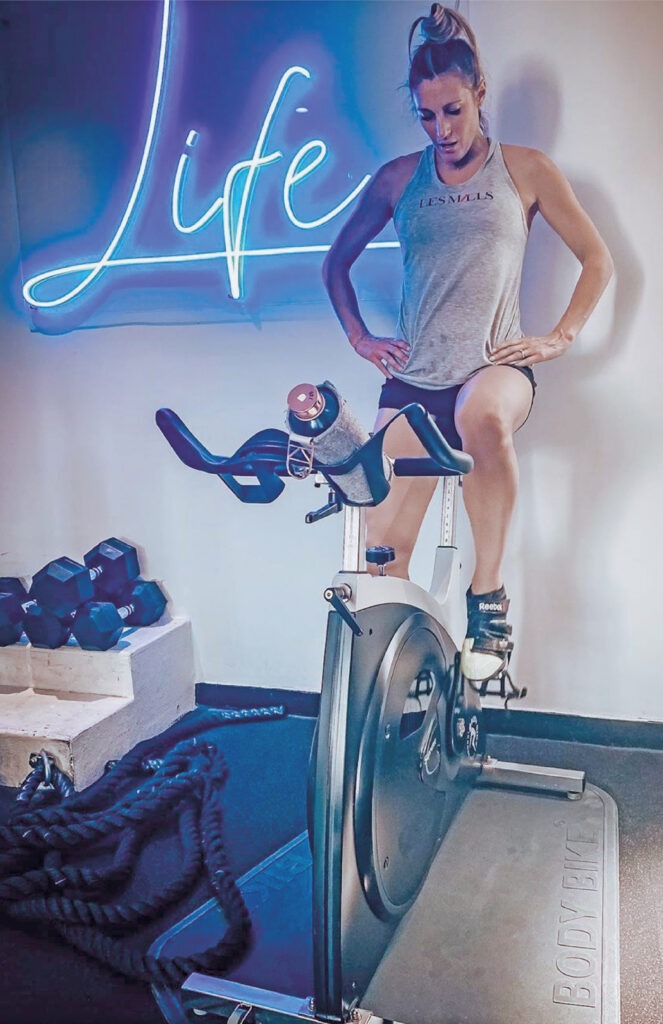
Zone 5 – 106–120 per cent of FTP – is the VO2 max zone. We’re talking three- to eight-minute all-out efforts, as if you’re riding up a steep hill. You’re training your body’s ability to bring oxygen into the lungs and from there to the bloodstream and the muscles; your VO2 max is the efficiency with which your body can do this, and it can be improved with training.
Zone 6 is anaerobic capacity, spanning 121–300 per cent of FTP. We’re talking very intense intervals of perhaps 30 seconds to two minutes only, and it’s about improving your ability to produce energy without oxygen. Working in this zone brings a rounded approach to fitness.
Finally, anything above that is zone 7 – neuromuscular power. Think of it as your very best sprint for five to 15 seconds, which might typically be anything from 700–2,500 watts. This is pure muscular strength building.
How do you calculate FTP?
As I say, FTP is about going as hard as you can for an hour, but not everyone wants to do that – not even pro athletes! There are a few shortcuts, but I believe the best is a 20-minute test that you can run as a class.
You start with a 20-minute warm-up – or 10–15 minutes if you want the class to fit neatly into an hour’s slot – including 3 x one-minute fast pedals to wake up the legs.
Then you do five minutes cycling as hard as you possibly can to exhaust the body’s anaerobic capacity – something that could otherwise skew the results – before 10 minutes of recovery, cycling at around 65 per cent of your capacity.
“Test your FTP every eight weeks; fitness generally changes in eight-week cycles. To keep progressing, re-set training zones around your rising FTP.”
Only then do you do the 20-minute time trial, striking up a strong, steady wattage that you think you can maintain for 20 minutes; you can tweak as you go, because we take an average reading, so don’t start too hard! Your FTP is your power average for the 20 minutes, minus 3–5 per cent to even more accurately estimate what you could do in an hour.
The class ends with a cool-down of 10–15 minutes’ easy pedalling.
People often object – they say they’re tired by the time we do the time trial – but that’s the whole point. We’re trying to approximate what you could do in an hour, so you have to be a little fatigued when you begin the 20-minute test.
Crucially, you should re-test your FTP every eight weeks, because fitness generally changes in eight-week cycles. To keep progressing, you need to continually re-set your training zones around your rising FTP.
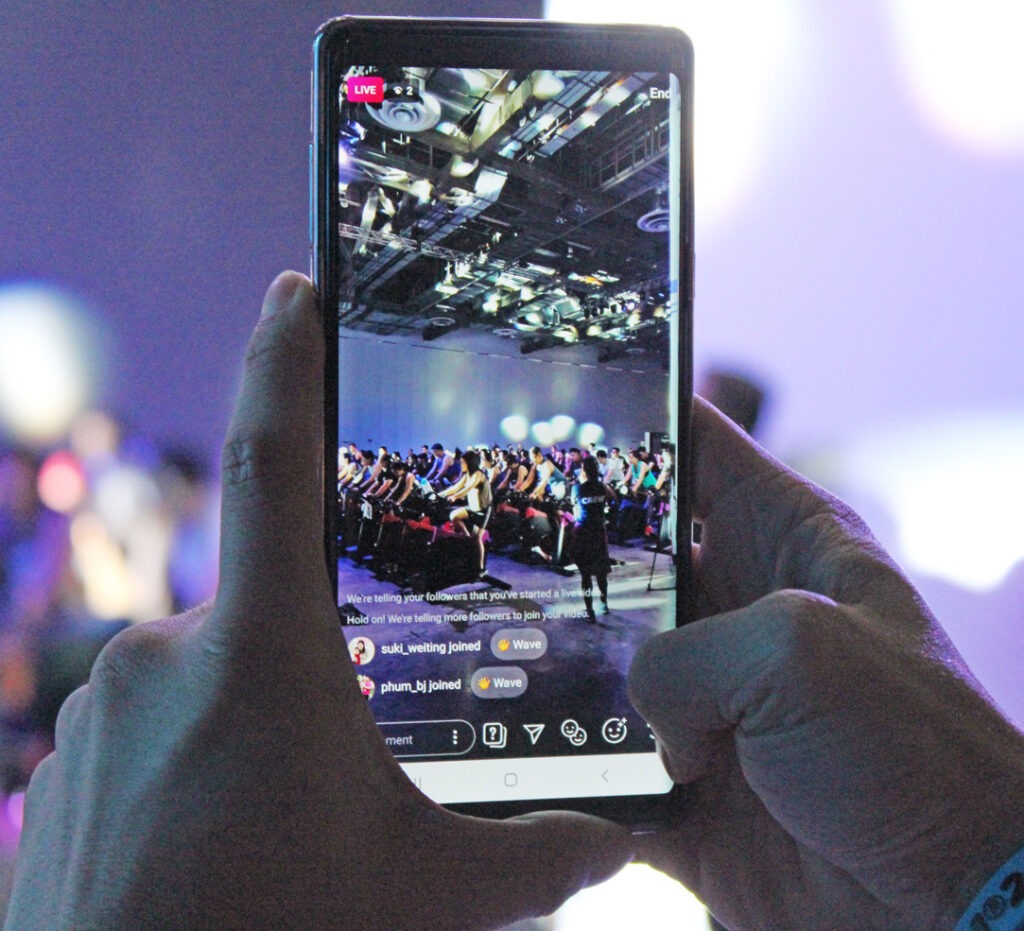
Do you always favour power training?
In a word, yes. It’s a great way to scale for everyone in the room, so they can train in the same zones and progress together but without having to achieve the same wattage.
It’s also possible to create classes around specific training objectives. “On Monday, our class will train the cardiovascular system with relatively low force; on Tuesday we’ll focus on improving our FTP, with 4 x 10 minutes at 95–105 per cent of FTP; Wednesdays will be all about improving anaerobic capacity, with short, hard efforts of 30 seconds to two minutes; Thursday’s class will focus on VO2 max, with three- to five-minute intervals, but we’ll throw in five muscular strength intervals first.” And so on.
Not every FTP zone is suitable for every level of fitness, though, so classes should be clearly labelled for their training objectives, benefits and level of experience required. Unfit beginners should focus on zones 1–3, for example, but note that it doesn’t get progressively harder from zone 1 up to zone 7: fitter beginners could do zone 7 and even zone 6, provided intervals aren’t too long and there’s plenty of variety in the class.
On the other hand, if you put a beginner straight into an FTP intervals class, I can pretty much guarantee they’ll never come back!
This is the beauty of power training, though. You know exactly what energy system you’re training – VO2 max or threshold power, for example – which is something other modes of training don’t allow for.
“How you create your wattage is important. In a general-purpose class, aim to push people out of their cadence comfort zones.”
Where does cadence (RPM) fit in?
Cadence can be a challenge for many people in a class, especially beginners who aren’t used to moving their leg muscles in a pedalling motion. At first, people generally want to pedal slower – perhaps 70–80 RPM – until they get used to it.
However, cadence is a very important metric, as power = force x cadence. You can produce 1,000 watts by cycling at a slow 40 RPM with the resistance cranked up to 20, or you could cycle at 150 RPM with the resistance at 5 and still produce 1,000 watts.
At face value, that may seem like the same outcome, but how you create your wattage is important: in this example, the 40 RPM approach is about producing the watts through force, which means you’re training muscular strength; the 150 RPM approach produces watts through speed and trains cardiovascular fitness.
When you teach a general-purpose indoor cycling class, you should aim to balance load between the muscles and the cardiovascular system. You need to push people out of their cadence comfort zones, helping endurance runners build muscle and weight lifters improve their cardiovascular fitness. You should also move people through the different FTP zones to work on strength, cardiovascular fitness and muscular endurance. This is how you use power training to improve all-round fitness.
Get in the zone
Monitoring your % FTP
If the key to effective indoor cycling is working to specified percentages of your personal FTP – well, how exactly do you do this? Easy, says Allen: with indoor cycling bikes now boasting advanced computers, you simply enter your personal FTP at the beginning of class and the console will show you what % FTP you’re hitting throughout the workout.
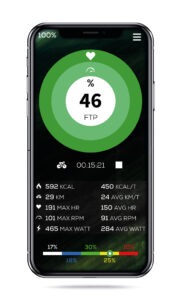 BODY BIKE Smart+ goes a step further. Believing that exercisers should have clear ownership of their personal data, and that operators should have future-proofed bikes, BODY BIKE got rid of integrated consoles around five years ago. In their place, an app that links seamlessly to any BODY BIKE Smart+ bike, transforming exercisers’ phones into portable consoles that can be upgraded with each app update, and that let exercisers carry their data with them.
BODY BIKE Smart+ goes a step further. Believing that exercisers should have clear ownership of their personal data, and that operators should have future-proofed bikes, BODY BIKE got rid of integrated consoles around five years ago. In their place, an app that links seamlessly to any BODY BIKE Smart+ bike, transforming exercisers’ phones into portable consoles that can be upgraded with each app update, and that let exercisers carry their data with them.
The latest app update, launched in April, features in-saddle installation: simply pedal for 30 seconds and the upgrade is installed on your phone, bringing your previous training history across with it. Alongside a host of new features, including achievement-based status updates, are all the old favourites – not least a number of FTP features.
There are two FTP tests you can do on your own – a five-minute test and a burnout test – which, as BODY BIKE CEO Uffe A Olesen explains, “allow people to easily do a test themselves at any point, rather than having to wait for their club to run a class as Hunter suggests”. Alternatively, if you already know your FTP, you can simply store it in your personal app settings.
You then monitor your % FTP during class by tapping the middle of the wattage ‘target board’ to reveal your % FTP figure.
% FTP is just one of numerous metrics that can be tracked through the BODY BIKE Smart+ app, alongside % max HR, cadence, kilometres travelled, calories burned and workout duration.

